

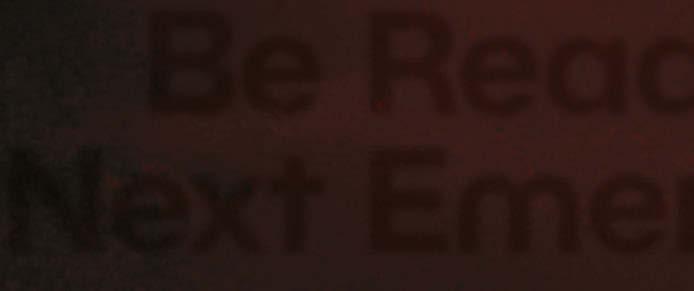
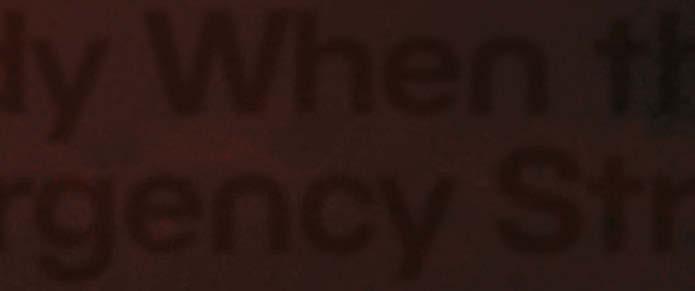

Hawaii DISASTER PREPARATION A SPECIAL EDITION OF HAWAII HOME + REMODELING MAGAZINE PRESENTED BY AIO HAWAII FREE | 2024 EDITION CHECK OFF YOUR LIST Breaking down what you need to know for a variety of disasters and more Be Ready When the
Emergency Strikes
Next
Building
ensuring food
with the Hawaii
A 36-page guide of information and resources for your home, business and family BEFORE, DURING, AFTER Meet people and organizations involved in keeping the community safe NUTRITION AND PROVISIONS
rations and
security
Foodbank

When disaster strikes, call Premier Restoration Hawai‘i!
Premier Restoration is the stateʼs largest locally owned restoration company, and for over 20 years, the people of Hawaiʻi have entrusted us with their homes and businesses. No matter the disaster, no matter the time of day or night, weʼll be with you every step of the way as we help you restore your property to pristine condition.
24-Hour Emergency Response
Water Damage Mitigation & Structural Drying
Fire & Smoke Damage Restoration | Document Restoration
Mold Removal & Remediation | Temporary AC Service
Odor Removal Service | Storm & Wind Damage Repair Reconstruction | Sewage Cleanup | Asbestos Abatement
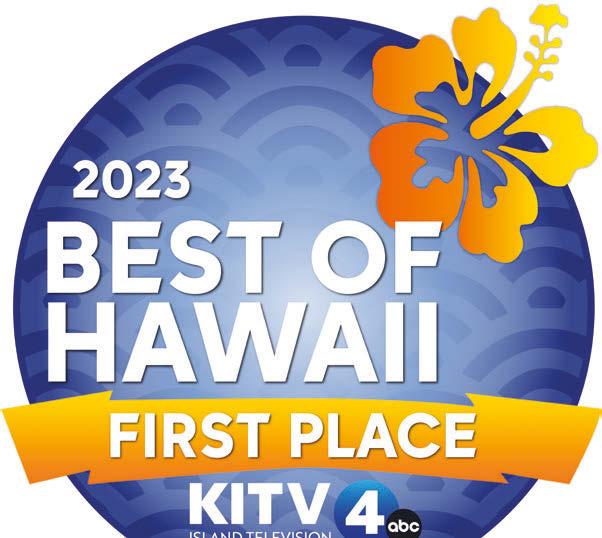
-HOUR EMERGENCY RESPONSE: 808.873.8886 Oʻahu | Maui | Hawaiʻi Island | Kauaʻi | www.premhi.com
24
SERVICES
KITVʼs Best of Hawaii Viewersʼ Choice Winner 2021, 2022 & 2023



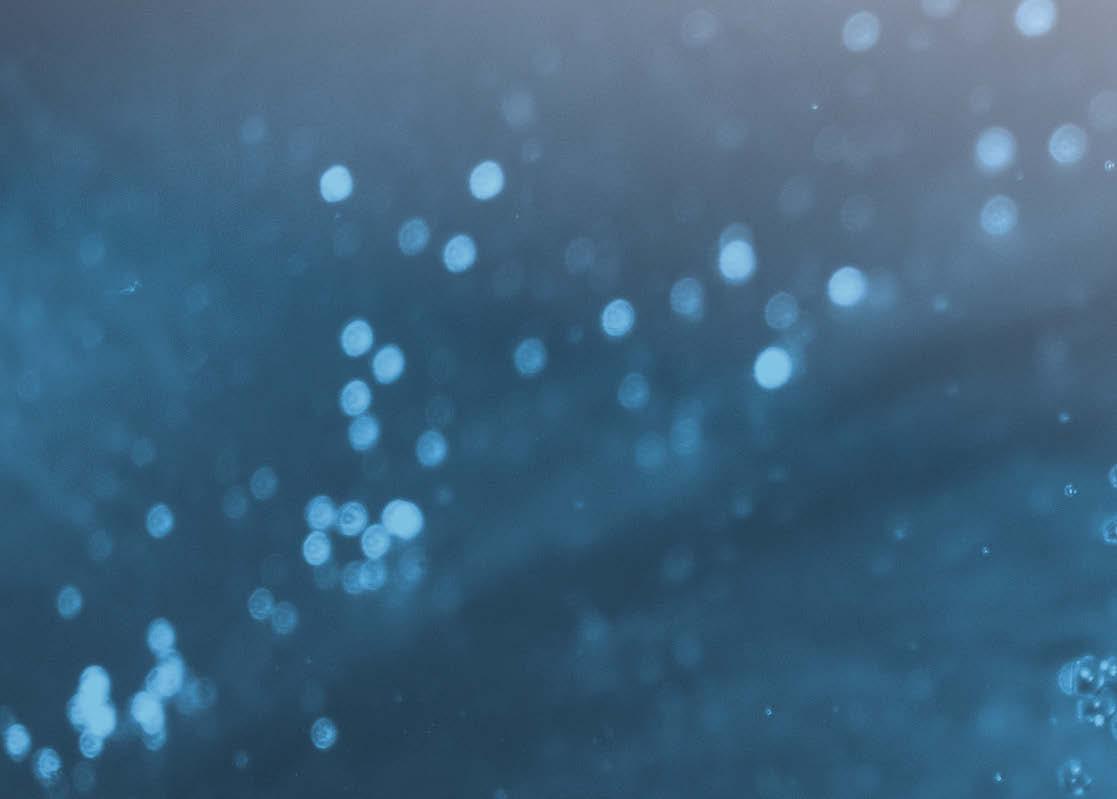
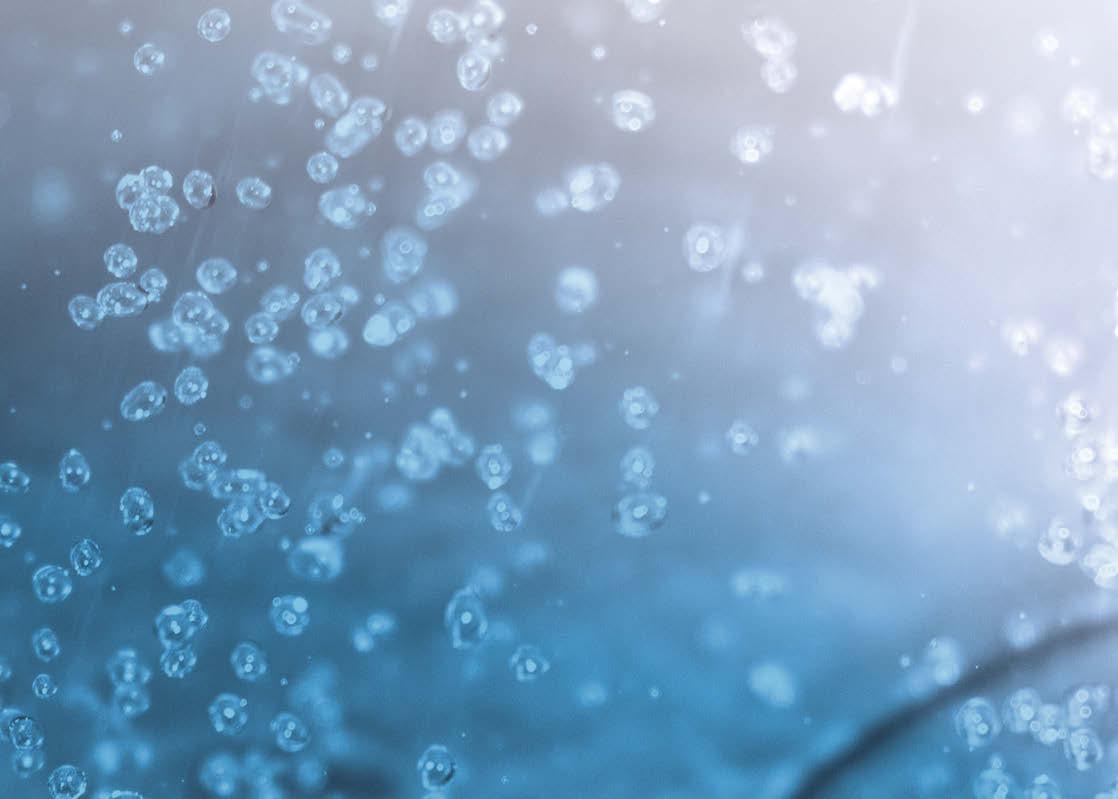




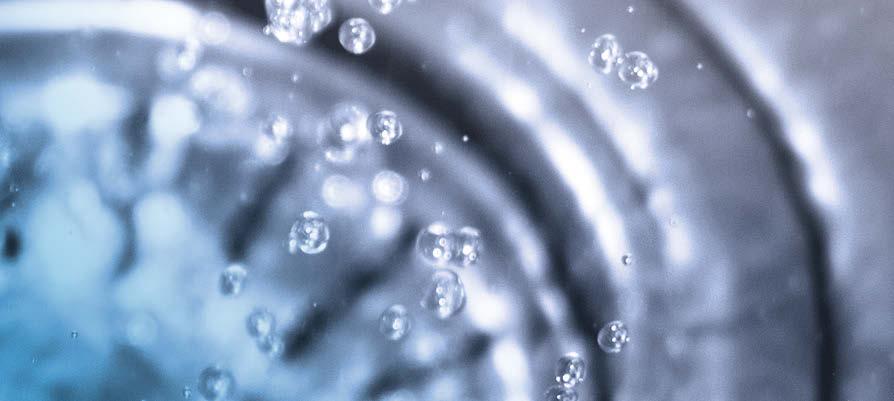

(808) 465-9999 | UrgentIsland.com License # BC-37988 We take pride in our plumbing. We provide you with the best plumbing solution, at the best price. Always. (808) 300-0535 535Plumbing.com License # CT-34954 • Plumbing installation • Plumbing repair • Drain cleaning • Pipe repair • Water heater repair • Hydro jetting • Leak detection • Camera inspection • Water main repair • Sewer pipe lining • And more! We’ll take care of the plumbing when disaster strikes. From Disaster to Renewal: Your Complete Restoration Partner Visit our showroom today. Certifications • 24 Hour Island Wide Emergency Service • Highly Trained Restoration Technicians • Infrared Imaging Camera Inspection • A Trusted Leader in the Restoration Industry • Locally Owned and Operated • Licensed General Contractor



12
12
Feature Series: ‘It Takes a Village’
aio Media Group
1088 Bishop St., Ste. LL2, Honolulu, HI 96813-3113
HAWAIIHOMEMAG.COM
T: 1-800-788-4230
• F: (808) 356-0528
CYD ROSA | PUBLISHER cydr@hawaiihomemag.com
• (808) 534-7537
DARLENE DELA CRUZ | EDITOR darlenedc@hawaiihomemag.com
• (808) 534-7160
CODY KAWAMOTO | CREATIVE DIRECTOR codyk@hawaiihomemag.com
• (808) 534-7140
DUANE K. KURISU | CHAIRMAN
SUSAN EICHOR | CHIEF EXECUTIVE OFFICER
BRANDON KURISU | CHIEF OPERATING OFFICER
JEFF TSUTSUSE | CHIEF FINANCIAL OFFICER
PATRICK KLEIN | CHIEF REVENUE OFFICER
Hawaii Disaster Preparation is a special edition of Hawaii Home + Remodeling presented by aio HAWAII ©2024 by aio Media Group. 1088 Bishop St., Suite LL2, Honolulu, HI, 96813.
8
Food for Thought
The Hawaii Foodbank has been stepping up its provisions and operations for disaster preparedness. Learn more from the nonprofit’s emergency planning coordinator.
20
Disaster Resource Guide
Here’s a handy checklist for putting together a basic emergency kit, along with a section of facts, contacts and resources compiled for various emergencies.
22
Disaster-Proof Your Home and Business
Homeowners and business owners know that natural disasters are inevitable. Protect your family, company and property with a recovery and continuity plan.
24
Fire Preparedness and Prevention
Fire safety has recently become a hot topic in light of events on Maui and abroad. Understand the risks of indoor and outdoor fires, and how to respond.
26
Notes for Hurricane Season
The Central Pacific hurricane season occurs between June 1 and Nov. 30 annually, with peak tropical cyclone activity around August and September.
28
Floods Explained
Flooding and flash flooding are possible at any time, but most incidents take place during the Islands’ wet season, October-April. Take caution with these tips.
30
Tsunami Awareness
Hawaii’s location in the middle of the Pacific Ocean makes it susceptible to tsunamis generated by seismic activity as far away as Japan, Alaska and Chile.
32
Understanding Earthquakes
Seismic activity is constantly happening in Hawaii. Although most earthquakes are too small to be felt, it’s important to know what to do when a major one strikes.
on the cover: Lava flows move northeast downslope of Mauna Loa volcano from the Northeast Rift Zone eruption on November 29, 2022. Photo: David Fee
hawaiihomemag.com • HAWAII DISASTER PREPARATION 2024 • 5
Contents
PHOTO: COURTESY OF U.S. GEOLOGICAL SURVEY; M. PATRICK
‘aiō noun









A wave that rises and falls without breaking; a swell.

We are the story tellers, the creatives and the innovators committed to guiding Hawaiʻi forward. Through our unique blend of expertise and passion, we bridge tradition with progress. We are aio.














































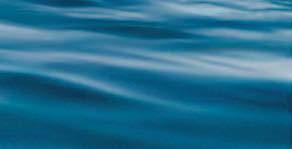






















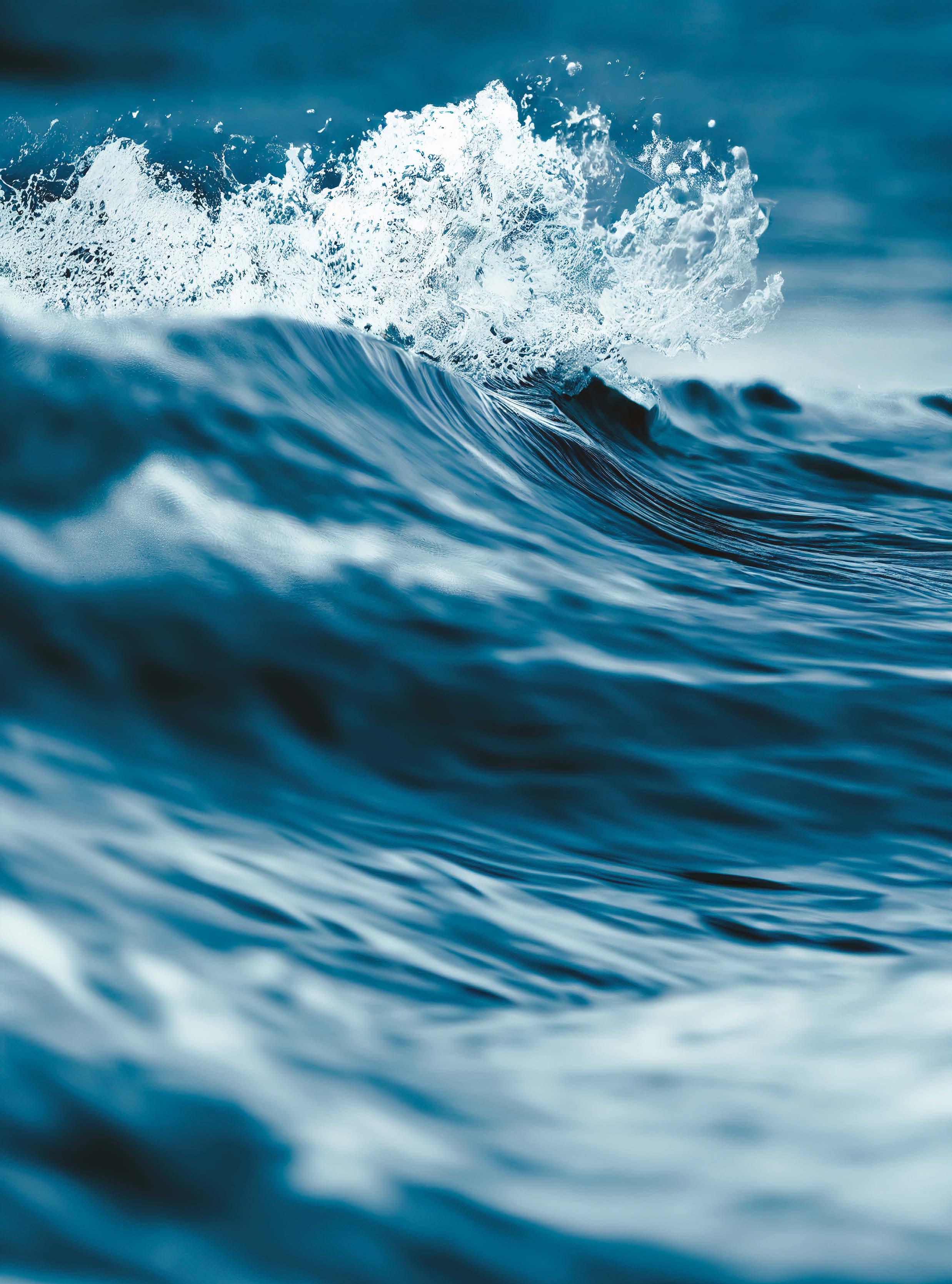
aiohawaii.com
A special edition of Hawaii Home + Remodeling magazine, presented by aio HAWAII.
As a young girl, I remember the supplies that my parents always had on hand for emergencies. Our family camped often, so our storage room had loads of goodies — propane tanks, stoves, lanterns, pots, canned goods, flashlights, batteries. You name it, we had it! Even when the electricity went out after Hurricane Iniki in the ’90s, I remember feeling safe and secure. I had my flashlight next to my bed at night and warm meals in the mornings that followed.
Fast forward to adulthood. Within moments of getting the emergency alert on my phone about Hurricane Lane in 2018, my car was packed and ready to go with everything my young family needed. Fortunately, Lane left the Islands quietly, with minimal impact. Although unpacking all of our supplies from the car was a pain, the experience was proof that my parents had taught me well. Preparation, after all, is key. It was also a good lesson for my son, who was learning the skills he will need to prepare his future family and protect his future home.
Even now, as we continue to wrestle with the devastating effects of the Lahaina wildfires, my disaster preparation is still a work in progress. I have added fire blankets to my list of supplies, and included my closest friends and family to our Life 360 mobile app so that we can track each other if we are separated.
Our team here at Hawaii Home + Remodeling magazine takes disaster preparation seriously — so much so, that we’re dedicating an entire issue to it for the second year in a row! We invite you to take multiple copies of it to share with friends and family.
Whether you are an experienced “prepper” or just getting started on learning how to equip yourself for an emergency, I know that the pages in this free community resource will provide you and your ohana with the information you need. Whether you decide to start small or go all-out, our first hope is that you simply start.
 Aloha nui, CYD ROSA Hawaii Home + Remodeling Publisher
Aloha nui, CYD ROSA Hawaii Home + Remodeling Publisher
hawaiihomemag.com • HAWAII DISASTER PREPARATION 2024 • 7
Food for Thought
Building rations and ensuring food security with the Hawaii Foodbank.
BY DARLENE DELA CRUZ
According to a recent study by konstantinos zougris and albie miles at the University of Hawaii West Oahu, 7 out of 10 local families don’t meet the Hawaii Emergency Management Agency’s guideline of keeping 14 days’ worth of food for emergencies. More than half of the respondents in the study said they either weren’t aware of the 14-day recommendation or didn’t have the financial means and storage to accommodate it.
“This shows that, while there are real barriers to preparedness that many households face, there are a lot of families that do have the ability to prepare but aren’t,” says Rachael Carrell, emergency planning coordinator at the Hawaii Foodbank (shown here).

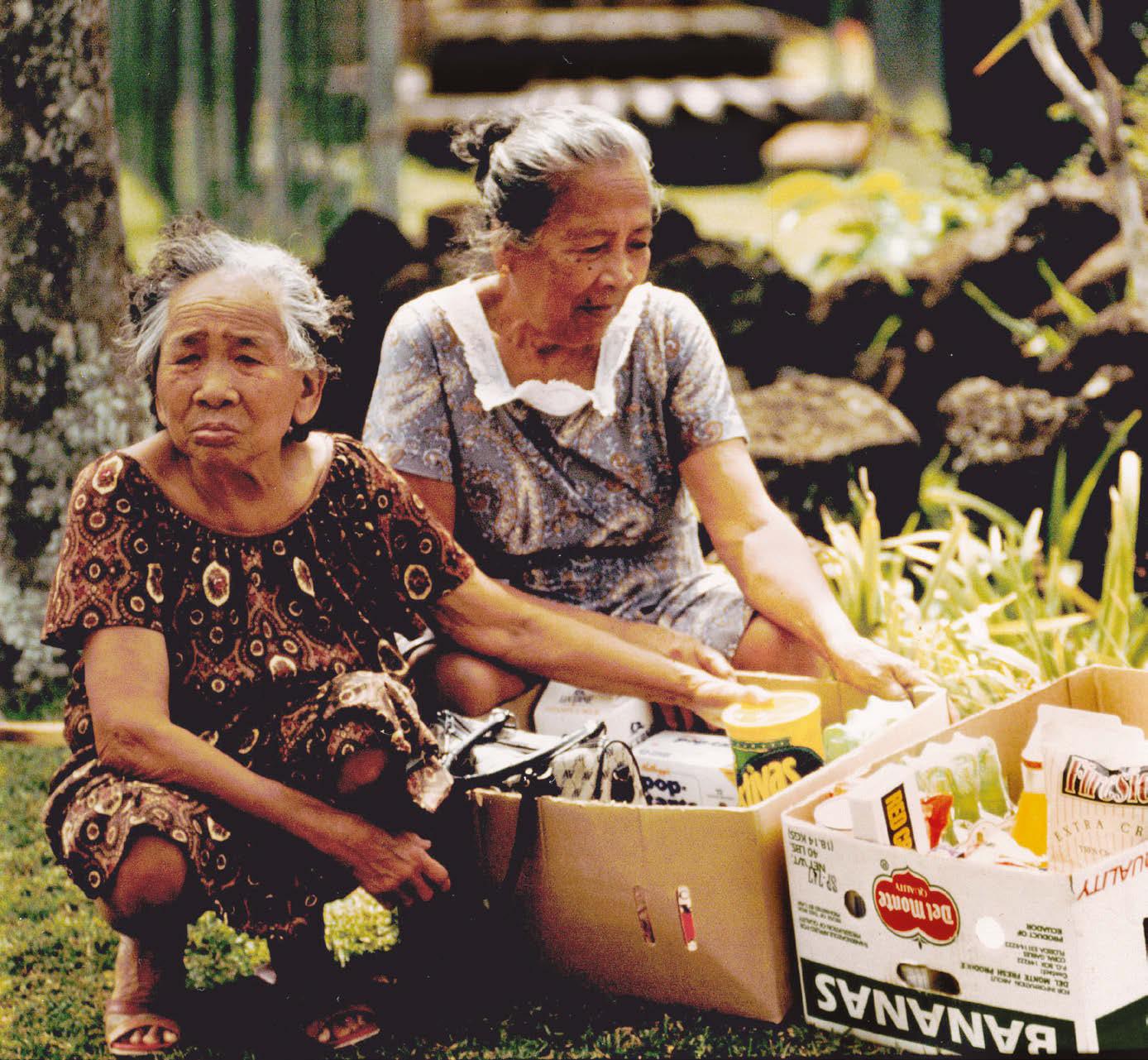
The Hawaii Foodbank has been stepping up its provisions, partnerships and operations for disaster preparedness. We caught up with Carrell to learn more. Responses have been edited for length and clarity.
How does the Hawaii Foodbank assist communities affected by disaster?
When Hurricane Iniki devastated Kauai in 1992, [we] responded quickly, establishing Hawaii Foodbank as an important disaster response organization. Since then, Hawaii has endured multiple natural disasters, storms, volcanic eruptions and, most recently, a global pandemic. Here are some of the ways we support our communities.
Sourcing food: One of the primary ways Hawaii Foodbank supports response efforts is by sourcing food donations and distributing food to those in need.
Supporting our agency partners: Most of the direct food distribution Hawaii Foodbank supports is delivered through our network of more than 200 agency partners across Oahu and Kauai.
FOOD SECURITY 8 • HAWAII DISASTER PREPARATION 2024 • hawaiihomemag.com
PHOTOS: AARON K. YOSHINO; COURTESY OF HAWAII FOODBANK

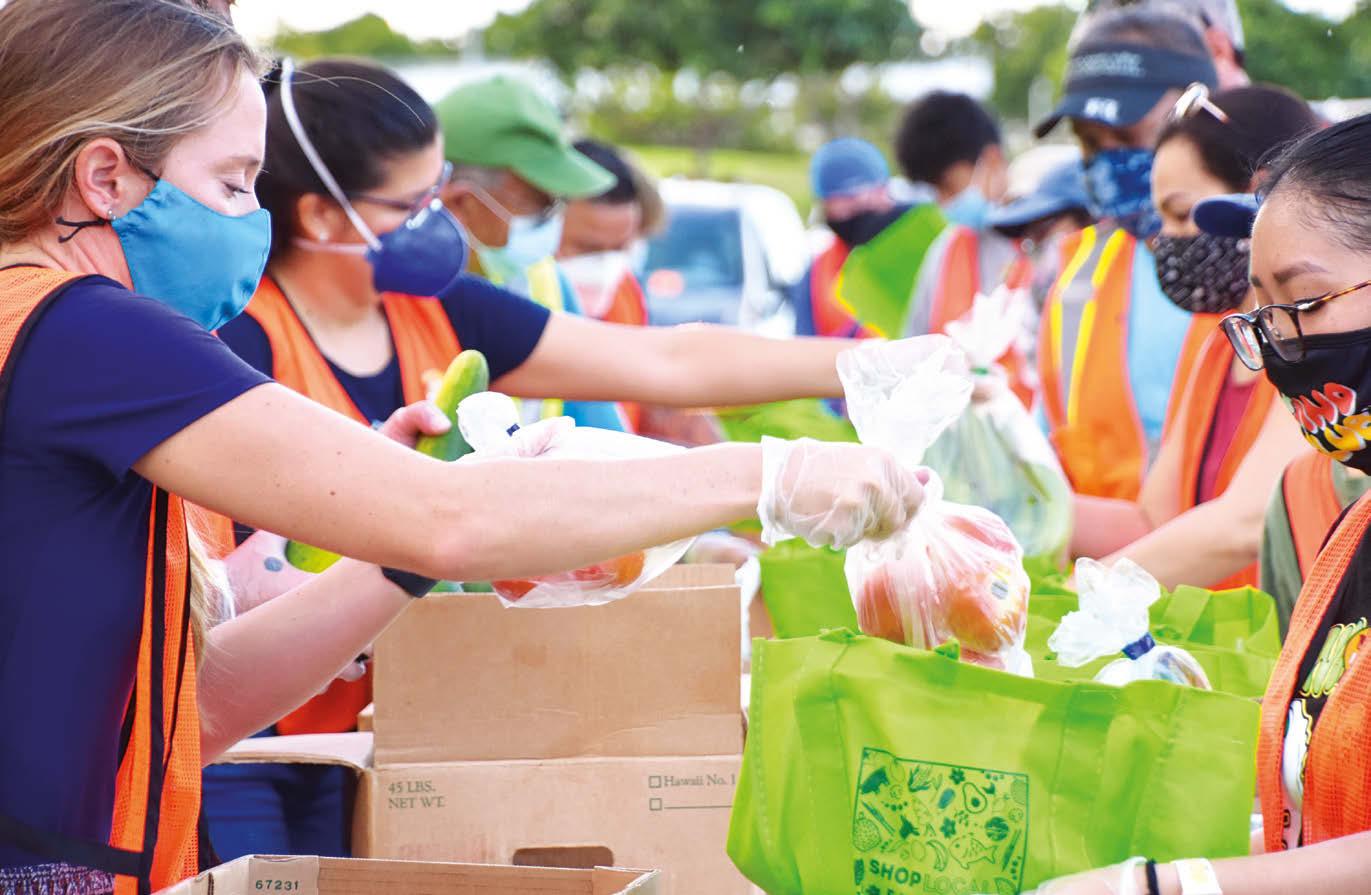
Honolulu feeding lead: We work closely with the Department of Emergency Management before, during and after disaster to improve community preparedness, convene key partners, and improve our collective ability to meet disaster feeding needs.
SNAP: In the event of a federally declared disaster, programs like D-SNAP (Disaster Supplemental Nutrition Assistance Program) become available, and our team helps enroll individuals and families to receive those benefits.
Support to the Food Bank Hui: We, alongside our branch on Kauai, the Maui Food Bank, and The Food Basket on Hawaii Island, make up a network of food banks that provide nutrition support.
What are some of the biggest challenges with food security during disasters?
Hawaii imports 80% to 90% of our food in a “just-in-time” model. This means that, collectively, we don’t have long-term reserves of food supplies on our islands. Shipping is currently the only mode of transportation that can provide the amount of food we would need at scale in the event of a major disaster, with a time frame of approximately two weeks to resupply from the continental U.S.
Hoarding is another challenge that creates scarcity in disasters. The more folks are able to prepare their emergency supplies ahead of time, the less disruption we’ll experience from panic and hoarding behaviors.
How can our readers support Hawaii Foodbank during emergencies?
Get 14-days prepared: This not only helps ensure our own families are self-sufficient, but it also supports the entire community by allowing emergency assistance to go to those who need it most.
Donate: In a disaster, monetary donations are the best way to make an impact. For every dollar donated, Hawaii Foodbank can provide food for more than two meals.
Volunteer: Consider volunteering with Hawaii Foodbank and one of our agency partners.
Visit hawaiifoodbank.org to donate and learn more.
TAKING STOCK
Any extra food you can store is a great step toward being disasterprepared, says Carrell. Here are some tips for your 14-day supply:
Look for low-cost foods that are high in protein and calories.
Stock up on shelf-stable items that you and your family typically eat — and watch for sales.
Save extra seasoning packets from takeout.
Select foods that don’t require cooking.
Choose low-sodium options to reduce thirst.
Opt for foods packaged in single servings to make sure opened food doesn’t spoil.
Consider all relevant health and safety needs, and remember to store baby formula, baby foods and pet foods.
FOOD SECURITY hawaiihomemag.com • HAWAII DISASTER PREPARATION 2024 • 9

Outage Options
Hawai‘i Gas highlights the benefits of backup generators for emergencies.
BY JADE SNOW
Power outages are one of the primary concerns local homeowners should be prepared for in an emergency. During heavy storms, for example, high winds and falling trees can damage above-ground power lines; in extreme events, outages can last for several days or weeks. That makes a backup generator a key investment for households, local experts at Hawai‘i Gas say. According to Hawai‘i Gas, a propane or natural gas generator offers many benefits. When other power sources fail, having a secondary power source ensures that families can boil water for safe drinking, eat hot meals, charge cellphones, and keep their refrigerators running to preserve food. This provides peace of mind that they and their loved ones will be comfortable, communicative and cared for when disaster strikes.
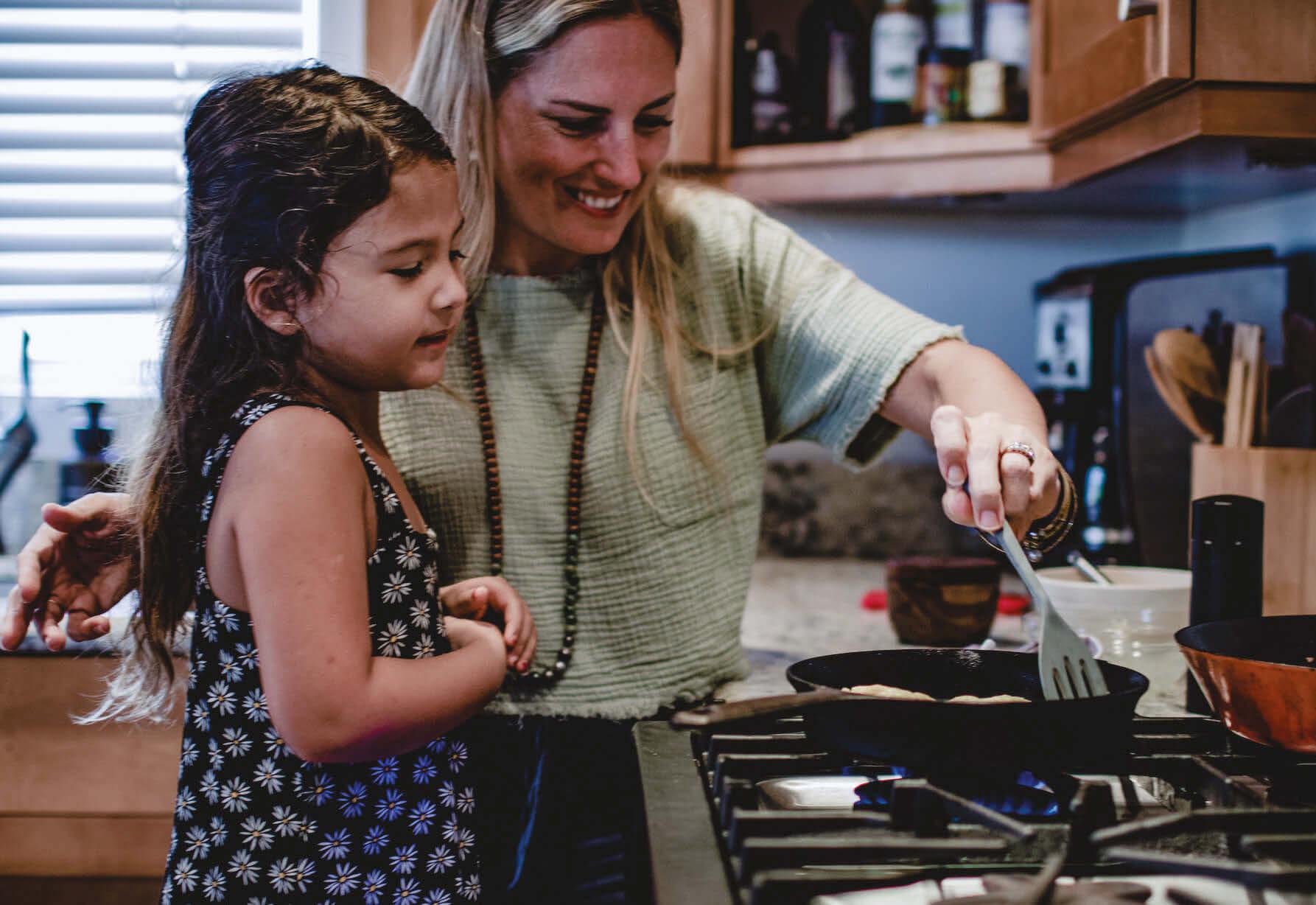
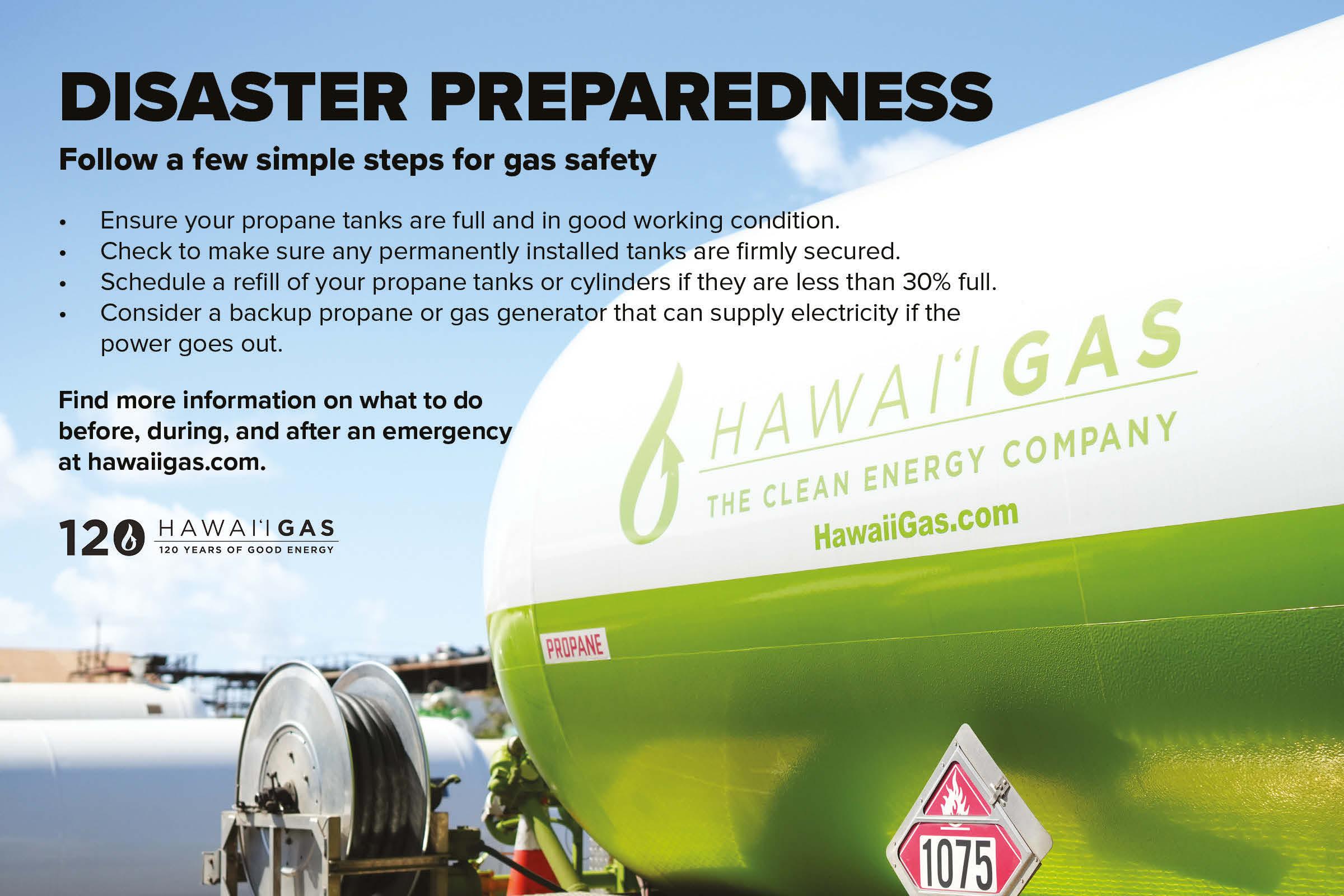
NATURAL GAS 10 • HAWAII DISASTER PREPARATION 2024 • hawaiihomemag.com
PHOTOS: GETTY IMAGES; COURTESY OF HAWAI‘I GAS
Propane and natural gas generators are not only reliable, they’re cleaner-burning, longer-lasting, and more stable and eco-friendly than diesel. While diesel begins to degrade within 28 days, propane in tanks and cylinders has no expiration date and will not degrade in storage. For an option that’s on the leading edge of the clean energy landscape, natural gas from the SNG Gas Plant on Oahu o ers a blend of hydrogen and renewable natural gas in its fuel mix.
Hawai‘i Gas suggests investing in small, portable natural gas or propane generators to power devices and provide light at night; 5-gallon tanks should be purchased for portable burners and grills. Larger, permanent propane and natural gas-powered generators can also be integrated to work with your current home electrical systems — consult Hawai‘i Gas for recommendations on new gas services (synthetic natural gas or propane) and other options for your home.
Visit hawaiigas.com for more emergency preparedness and gas service tips.
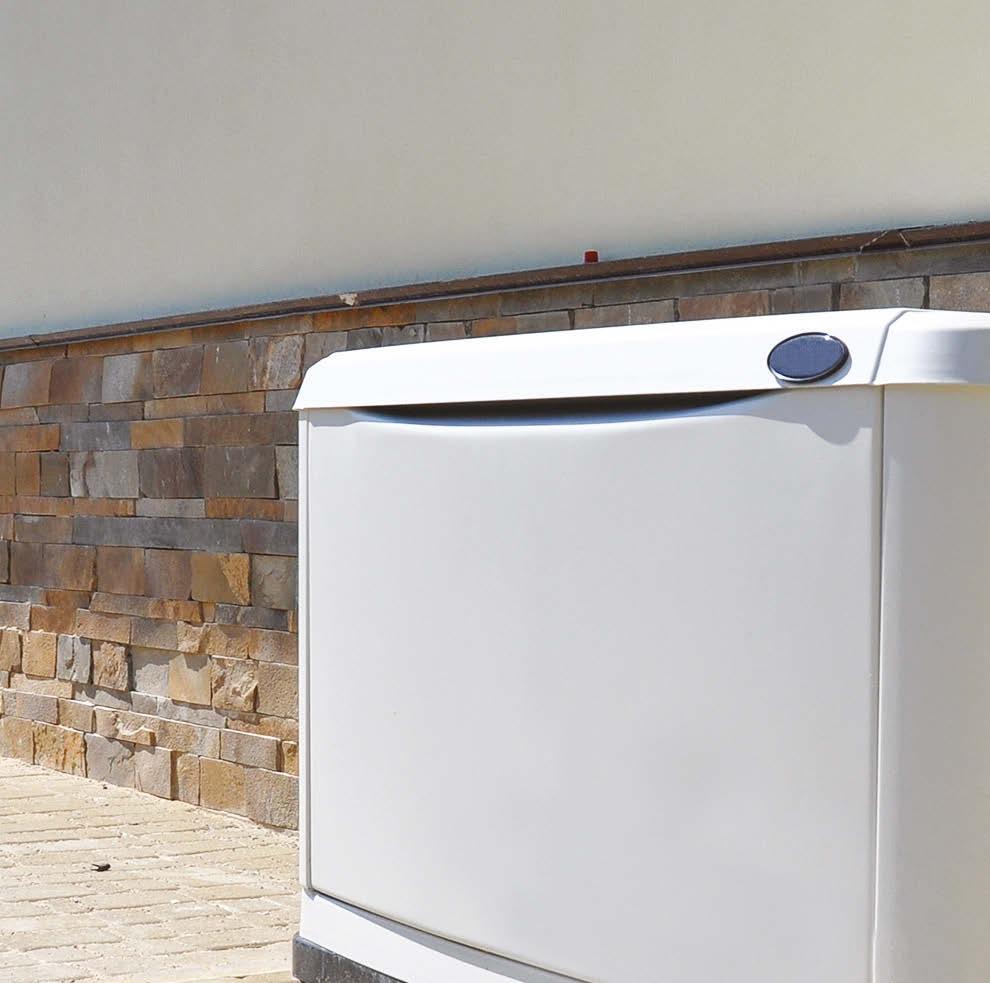
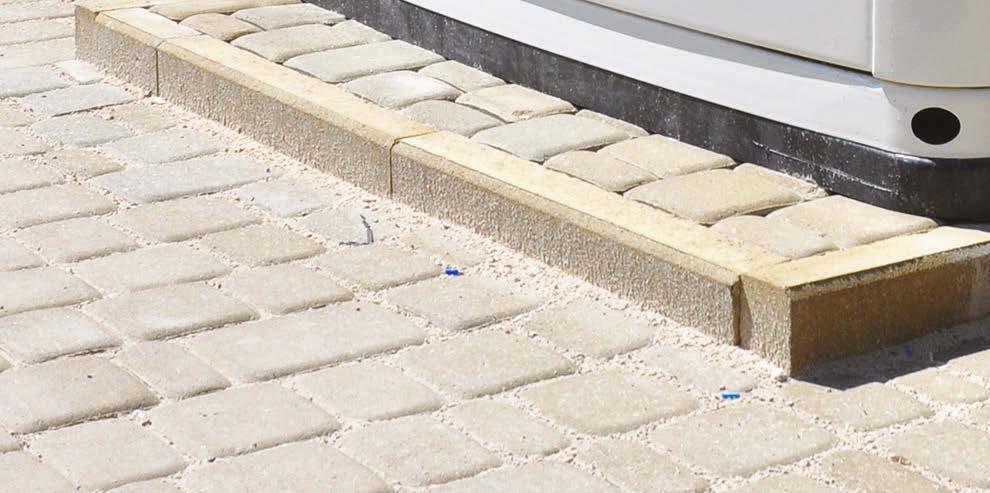
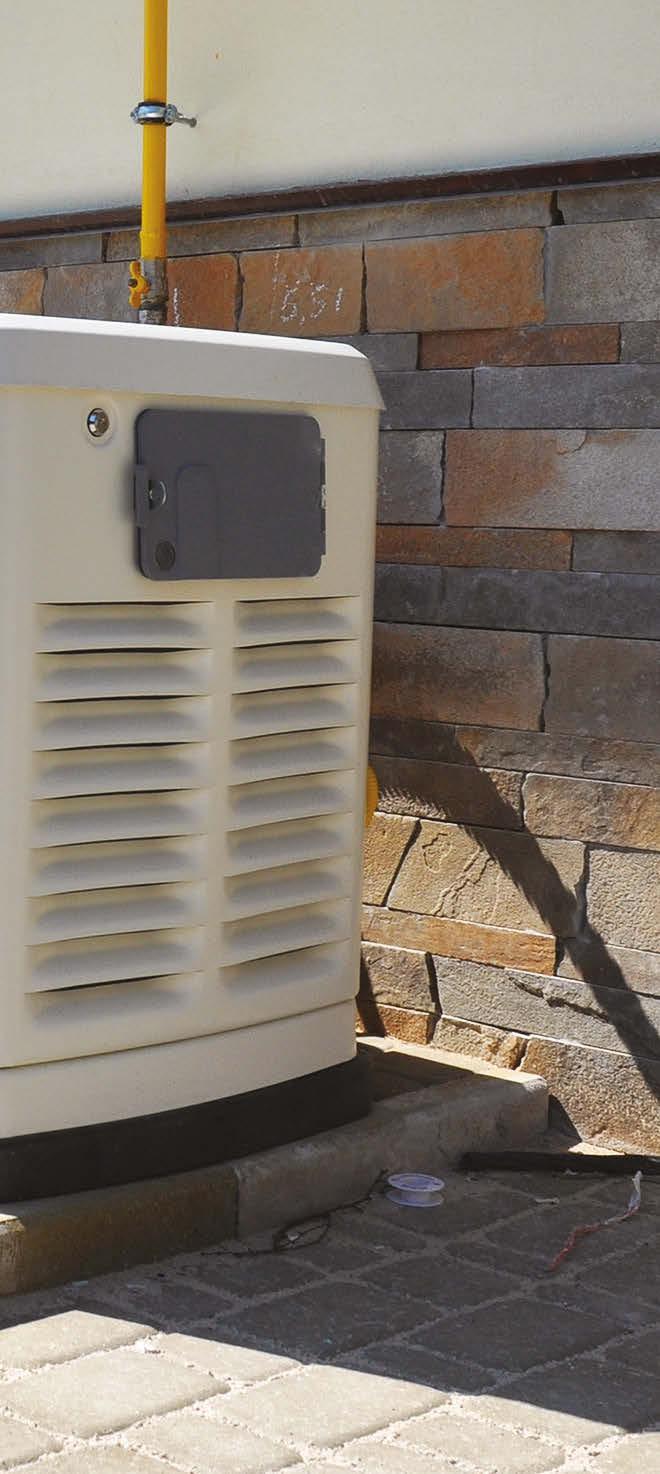

NATURAL GAS
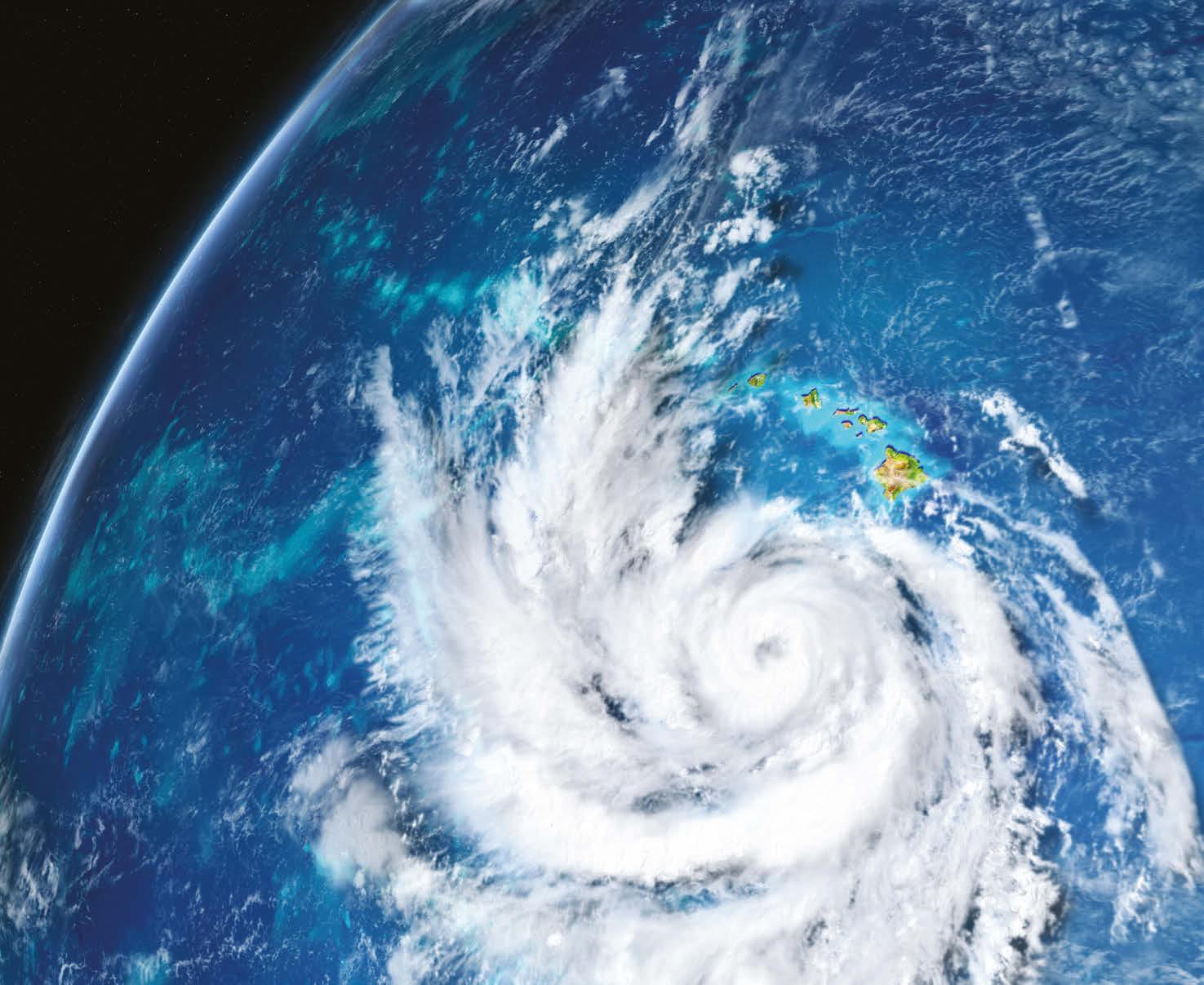
HURRICANE LANE (2018):
“Hurricane Lane in 2018 was the first time my wife and I activated our family preparedness plan. I can’t imagine how stressed out we would have been if we didn’t already know where we would be going to stay safe.”
— JOHN BRAVENDER, CENTRAL PACIFIC HURRICANE CENTER
IT TAKES A VILLAGE
Keeping communities safe before, during and after a disaster is a collective effort. Our feature stories introduce you to some of the key people and organizations who lend their time, expertise and skills in emergency preparedness.
KALAPANA EARTHQUAKE & TSUNAMI (1975):
“For a local tsunami that hits in minutes, like the one off Kalapana on the Big Island in 1975, people on the coast need to evacuate immediately as far inland to higher ground … they cannot wait for the sirens to sound.”
— LAURA KONG, INTERNATIONAL TSUNAMI INFORMATION CENTER

12 • HAWAII DISASTER PREPARATION 2024 • hawaiihomemag.com
GETTY IMAGES; COURTESY OF INTERNATIONAL TSUNAMI INFORMATION CENTER
PHOTOS:
Emergency Crews
Local and national organizations work behind the scenes to keep communities safe.
BY DARLENE DELA CRUZ
Before major natural disasters happen, scientists and staff members in specialized organizations are constantly keeping tabs on potential threats. These unsung heroes have the knowledge and experience to understand weather patterns, tsunamis, earthquakes, volcanic eruptions and more, and are vital to keeping the public informed in emergencies.
NATIONAL WEATHER SERVICE/CENTRAL PACIFIC HURRICANE CENTER
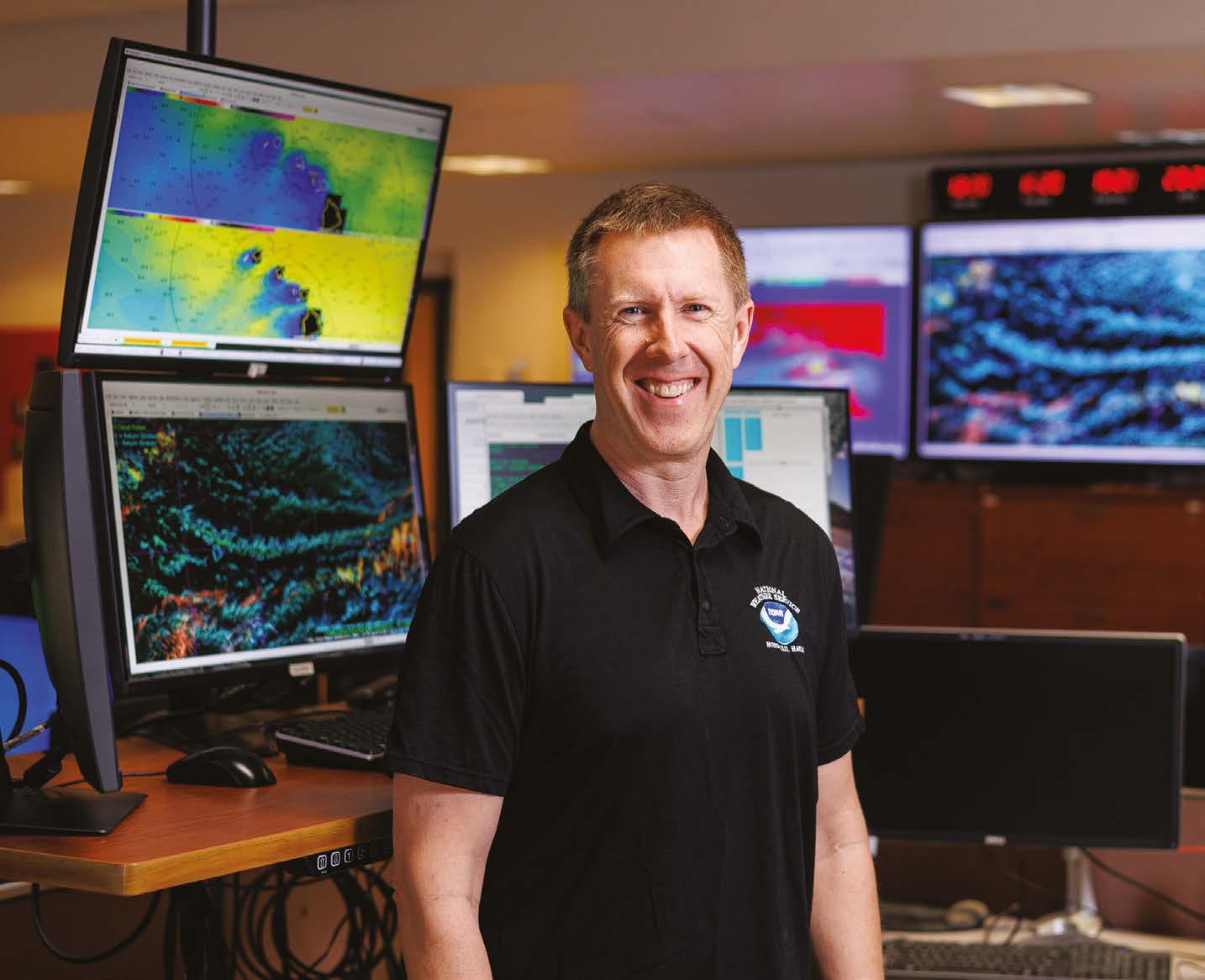
According to john bravender, warning coordination meteorologist at the Central Pacific Hurricane Center, operations at the National Weather Service forecast office in Honolulu are staffed around the clock. During nonemergencies, the agency provides general ocean and weather forecasts and warnings for Hawaii and the Pacific.
The Central Pacific Hurricane Center, which is co-located in the NWS Honolulu office, specifically tracks tropical cyclone development. Bravender and CPHC staff use satellite imagery to evaluate position and intensity updates as storms move closer to Hawaii. When a hurricane is imminent, CPHC goes into high gear.
“We pull in off-duty forecasters on overtime, administrative staff, and staff from our regional headquarters to augment the regular forecast shift,” says Bravender. CPHC also brings in experts to provide weather briefings for emergency managers and civil decision-makers. Additional emergency staff assist with processing observations from hurricane hunter aircraft and provide
extra information through hurricane statements, flash flood warnings and more.
Bravender knows firsthand the importance of having an emergency preparedness plan. As Hurricane Lane approached in 2018 — one of the few Category 5 cyclones to veer closely toward the Islands — Bravender and his wife determined that he would remain at CPHC headquarters during the storm, while his wife would stay at her office where they kept emergency supplies.
“The morning before Lane was possibly going to make landfall,” says Bravender, “a thought struck me as I walked down the pier: I might never see my home again.
“However, because we had a plan and knew ahead of time what we were going to do, we didn’t have to worry about it in the moment. That’s why it’s so important to decide ahead of time what you and your family are going to do and how you’ll stay in touch — not just for hurricanes but for any type of disaster.”
Bravender advises the public to check out updates and an upcoming redesign to the NWS website at weather.gov.
hawaiihomemag.com • HAWAII DISASTER PREPARATION 2024 • 13
PHOTOS: AARON K. YOSHINO
John Bravender, CPHC warning coordination meteorologist
INTERNATIONAL TSUNAMI INFORMATION CENTER
Established in 1965, the international tsunami information center supports the Pacific Tsunami Warning and Mitigation System, which is coordinated by UNESCO’s Intergovernmental Oceanographic Commission. The ITIC office is based at the National Oceanic and Atmospheric Administration’s Daniel K. Inouye Regional Center on Ford Island.
“Domestically, we support Hawaii, American Samoa, Guam and the Commonwealth of the Northern Mariana Islands, and we have an office in Puerto Rico that supports the Caribbean including Puerto Rico and the
U.S. Virgin Islands,” says ITIC Director Laura Kong. “Our work involves training and outreach to the public and government agencies responsible for tsunami mitigation.”
When a tsunami threat occurs, Kong and ITIC are vital advisers to government officials on the expected tsunami impact and observed tsunami waves. Based on their guidance, officials can determine appropriate public warnings and evacuation mandates in their respective states or territories. During a Hawaii tsunami warning, Kong serves as the state tsunami adviser to the Hawaii Emergency Management Agency, reporting to the state’s Emergency Operations Center in Diamond Head Crater.

“After a destructive tsunami, my role is to continue to serve as a science liaison” between tsunami researchers interested in collecting scientific tsunami impact field data, says Kong. She and ITIC also advise emergency response officials on search-and-rescue and debris-clearing operations.
Kong, who has a doctorate in marine seismology and has been ITIC’s director since 2001, was involved in establishing the Indian Ocean Tsunami Warning System after a tsunami in that region killed 228,000 people across 14 countries in 2004. She and the ITIC team also strengthened tsunami preparedness in American Samoa; with training from ITIC in July 2009, the U.S. territory was better-prepared when a major tsunami hit two months later.
“Our main message was that since American Samoa has a local tsunami threat from the Tonga Trench, everyone must know the natural tsunami warning signs — strong shaking, receding ocean, roar like [an] airplane from onrushing waves — and immediately evacuate,” says Kong. “After the tsunami, we were told that our efforts had saved many lives.
“What we have learned over many decades and deadly tsunamis is that even though you have the best tsunami warning centers in the world, it still comes down to whether people are prepared and know what to do when a dangerous tsunami is coming,” she adds. Visit
14 • HAWAII DISASTER PREPARATION 2024 • hawaiihomemag.com
for
itic.ioc-unesco.org
ITIC tsunami-preparedness resources.
PHOTOS: ELYSE BUTLER; COURTESY OF U.S. GEOLOGICAL SURVEY; CHERYL GANSECKI; M. PATRICK
Laura Kong, ITIC director

HAWAIIAN VOLCANO OBSERVATORY, U.S. GEOLOGICAL SURVEY
The team at the hawaiian volcano observatory, a part of the U.S. Geological Survey, comprises scientists and technicians who are vital in preparing communities for earthquakes and eruptions. Monitoring seismic and volcanic activity happens 24 hours a day at the volcano observatory, with information constantly pouring in from a network of more than 200 sensors, seismometers, gas detectors and thermal/visual cameras across Hawaii Island.
“If data exceeds certain levels, we go into full mobilization with about 30 staff,” says Ken Hon, HVO scientist-in-charge. “We work with Hawaii Civil Defense, Hawaii Emergency Management Agency, and have a strong partnership with Hawaii Volcanoes National Park.”
Hon and the volcano observatory staff serve as advocates for community preparedness through public talks, news articles and programs such as Volcano
Awareness Month every January. It’s important to make sure information gets out to vulnerable areas, says Hon. He points to one of his most impactful presentations, in which he shared scenarios and strategies for an impending lava flow, during a town meeting in Kalapana early in his career.
“People were clapping after the presentation, and I wondered why,” he says. “Later, I asked someone why they were clapping, and they said, ‘You treated us like adults and gave us information that people can understand.’ That stuck with me for the rest of my work.
“You just need to be prepared,” he adds. “The most important thing is to make sure you have a communications plan with your loved ones.”
The Hawaiian Volcano Observatory and USGS play a key role in advising rebuild and relief efforts. Since Kilauea erupted on Hawaii Island in 2018, for example, staff members have been heavily involved in assessing areas for reconstruction, safety hazards, and where to replace damaged equipment and facilities.
Learn more about the work of the volcano observatory and USGS at usgs.gov/observatories/hvo.

hawaiihomemag.com • HAWAII DISASTER PREPARATION 2024 • 15
Ken Hon, HVO scientist-in-charge
Helping People During Emergencies and Beyond
Lend a hand with Hawaii Voluntary Organizations Active in Disaster.
BY DARLENE DELA CRUZ
Nonprofits, faith-based groups, government agencies, private sector companies and community representatives constitute the Hawaii Voluntary Organizations Active in Disaster, a hui of support that mobilizes in times of emergency. These members and partners of Hawaii VOAD work together to facilitate the four C’s of disaster response: cooperation, communication, coordination and collaboration.
According to state VOAD chair Matt Glei, establishing a VOAD chapter in the Islands began with members of the grassroots Hawaii Kai Strong neighborhood action team. Their discussions about disaster preparedness with other neighborhood groups revealed the need for an organized hub of volunteers to assist with bringing essential supplies, information and services to vulnerable areas.
“We’ve created what we call a cross-island community resilience network,” says Glei.
Chapters of National VOAD are present in all 50 U.S. states; Washington, D.C.; and territories such as the Commonwealth of the Northern Mariana Islands, Puerto Rico and the U.S. Virgin Islands. Within each state or territory VOAD are smaller community VOADs that work on the ground in their respective regions. In

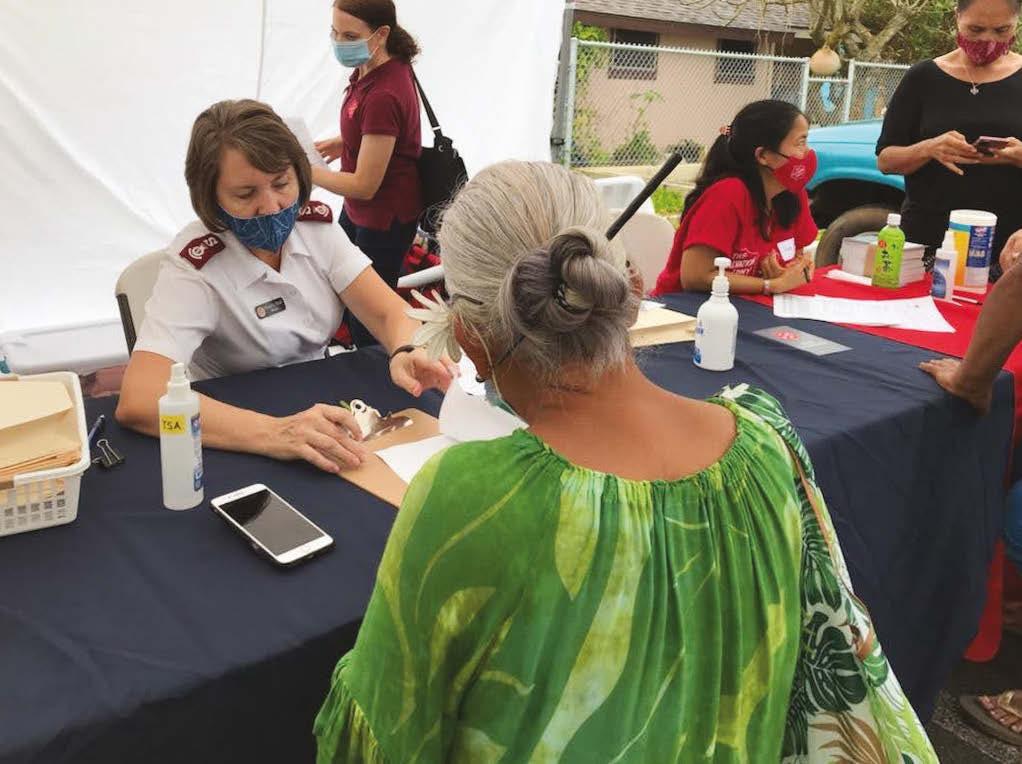
Hawaii, community VOADs are designated for Oahu, Maui, Kauai and Hawaii Island.
Having access to local and national civil defense and emergency management agencies allows VOADs to monitor important resources and facilitate their resupply. Glei says VOAD stays in touch with government officials and is part of strategic planning when disasters arise. VOAD members and organizations receive alerts when assistance is needed with flood cleanups, food collections and distributions, and with bigger initiatives such as restoring communications after the wildfires on Maui. National VOAD partners like Lowe’s and Home Depot also are available to assist with state and community relief efforts.
Glei says the increased attention on emergency preparedness has underscored the importance of being ready to help when disaster strikes.
“We’ve got to build our capabilities, capacities, and we’ve got to train people,” says Glei. “Until you’ve gone through it, you don’t understand it.
“Now’s the time for us to talk to people and say, so what are you going to do in a disaster? And how can I help? Now’s the time to build those relationships.”
For more information visit hawaiistatevoad.org.
16 • HAWAII DISASTER PREPARATION 2024 • hawaiihomemag.com
PHOTOS: COURTESY OF HAWAII VOLUNTEER ORGANIZATIONS ACTIVE IN DISASTER

HAWAII VOAD MEMBER AGENCIES
• Access to Independence
• Adventist Community Services
• All Hands and Hearts
• Aloha United Way 211
• Amateur Radio Relay League
• American Red Cross
• Anaina Hou Community Park
• Be Ready Manoa
• Big Island Amateur Radio Club
• Catholic Charities Hawaii
• Christ Lutheran Church
• Church of Latter-day Saints (LDS) Charities
• Church of the Holy Apostles
• Churches of Scientology Disaster Response
• Response Hawaii
• Citizen Church Maui
• Connect Point Church
• Crisis Cleanup
• Cultural & Linguistic Outreach International
• East Maui Ready (Hoomakaukau Maui Hikina)
• Emmanuel Lutheran Church
• Feed My Sheep
• Global Empowerment Mission
• Habitat for Humanity Maui
• Hale Halawai Ohana O Hanalei
• Hale Mahaolu
• Hana Laulima Lahui O Kau
• Hawaii Animal Rescue Foundation
• Hawaii Community Foundation
• Hawaii Foodbank
• Hawaii Kai Strong
• Hawaii Meals on Wheels
• Hawaii Pacific Baptist Convention
• Hawaiian Humane Society
• Helping Hands Hawaii
• Honpa Hongwanji Mission of Hawaii
• Island Preparedness Group
• Kailua Alert & Prepared
• Kaneohe/Kahaluu Community Emergency Response Team
• Kauai Habitat for Humanity Inc.
• Kauai Independent Food Bank
• Kauai Search & Rescue
• Keiki to Kupuna Foundation
• Kilauea Drama & Entertainment Network (KDEN)
• Koolaupoko Emergency Preparedness and Response
• Lanakila Pacific
8 WAYS VOAD ASSISTS IN DISASTERS
Sheltering services
Feeding services
Emotional/spiritual care
Emergency assistance
Communication services
Donations management
Cleanups (“muck outs,” gutting, debris removal)
Long-term recovery
• Legal Aid Society of Hawaii
• Makai Foundation
• Maui Economic Opportunity Inc.
• Maui Food Bank
• North Kohala CERT
• Operation BBQ Relief
• Pacific Disaster Center
• Pacific Health Ministry
• Presbyterian Disaster Assistance
• Project Vision Hawaii
• Reach Out America International
• St. Anthony Church Maui Disaster Relief
• SBH Taro
• Southern Baptist Disaster Relief
• Team Rubicon
• The Episcopal Church in Hawaii
• The Food Basket Inc.
• The Salvation Army
• The Spirit Horse Ranch
• Third Wave Volunteers
• Tzu Chi Foundation
• UMCOR Hawaii
• Visitor Aloha Society of Hawaii
hawaiihomemag.com • HAWAII DISASTER PREPARATION 2024 • 17
Recovery and Relief
Community assistance is available for homeowners when it’s time to rebuild.
BY DARLENE DELA CRUZ
Reconstructing homes and neighborhoods after a disaster requires cooperation across various sectors, and organizations such as the Building Industry Association of Hawaii have been incorporating ways to get its members and partners more involved with disaster assistance. Most recently, BIA has been collaborating with the National Association of Home Builders on community recovery initiatives following last year’s wildfires on Maui.
Jonathan Falk, NAHB director of disaster operations, shares insights and advice on rebuilding after the wildfires and other disasters.
Describe what you do in your role as director of disaster operations at NAHB.
As the director of disaster operations at the National Association of Home Builders, I lead and coordinate the activities of the NAHB disaster relief program. Working with housing experts from all disciplines, the program provides comprehensive assistance and support to NAHB’s nationwide federation of over 600 state and local home building associations in preparing for, responding to, and recovering from natural disasters. Every day I am honored to work with local homebuilders and those in the construction industry, as their commitment to finding novel and innovative ways to support rebuilding efforts is incredible.

How have you worked with BIA and others in Hawaii regarding disaster preparedness and rebuilding?
We have worked with BIA on preparedness and response for a number of disasters in the past years, from hurricanes to the recent Maui wildfire. From on-the-ground meetings with stakeholder groups, to production of communications resources to effectively distribute education messaging on rebuilding to survivors, and efforts with our advocacy teams in engaging with our federal and nonprofit partners to provide expertise, the NAHB team is working continuously with BIA to support and advance rebuilding efforts. In addition, NAHB
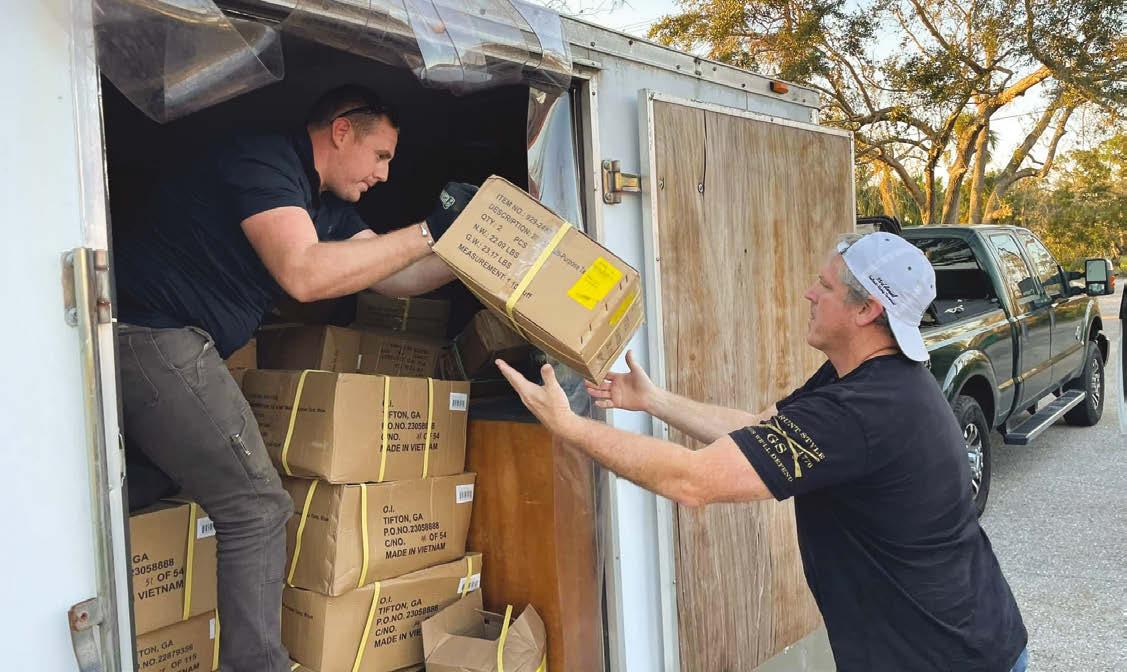
18 • HAWAII DISASTER PREPARATION 2024 • hawaiihomemag.com
PHOTOS: COURTESY OF NATIONAL ASSOCIATION OF HOME BUILDERS
left to right: Roseann Freitas, BIA Hawaii CEO; Alicia Huey, NAHB immediate past chair; Marc Rinker, BIA Hawaii president-elect and Hawaii Building Industry Foundation board of trustees member; Jonathan Falk, NAHB director of disaster operations.

provided a grant of $50,000 to the Hawaii Building Industry Foundation’s Maui Recovery + Rebuild Fund.
Can you share some tips, advice or resources for homeowners available through NAHB?
Rebuilding a home after a disaster can be a complex process. For homeowners and disaster survivors, NAHB and BIA offer the following tips:
Contact your insurance company: The first step is to review your homeowners insurance policy and contact your insurance company as soon as possible to report any damage. To support your claim, take photos of all damage and have copies of any related receipts to show the claims agent or adjuster. In addition, BIA recommends that all individuals who were impacted by the Maui wildfires apply for federal assistance by visiting disasterassistance.gov or calling 800-621-FEMA (3362).
Stay safe during damage assessments: Unfortunately, injuries after the disaster are all too common, such as equipment accidents, falls or burns. In general, burned structures and surfaces are unstable and unsafe. Experts say that homeowners should take extreme caution around trees, downed power lines, and other towering structures that may have lost stability.
Create a recovery folder: Rebuilding a home can be a complex process, with many persons, documents and processes involved. Compile and organize any applicable contacts, communications or forms into either virtual or physical folders in order to keep this information centralized and easily accessible.
Work with a professional homebuilder: Hiring a local expert contractor has many benefits. A professional homebuilder can provide a wealth of experience and professional integrity, and solve any challenges you may encounter as you begin to rebuild your home. BIA has a list of building industry professionals who understand the intricacies of building homes in Maui [for example], and have a firm grasp on requirements to meet city ordinances, regulations and permits.
Preparing your future home: Significant natural disasters occurring over the past few years have prompted action to increase the resiliency of communities, infrastructure and buildings. Ask a professional homebuilder about improving resistance to natural disasters at your future home.
For further information on rebuilding and recovery, as well as best practices on hiring a contractor, visit BIA’s website at biahawaii.org or NAHB’s consumer resources page at nahb.org/other/consumer-resources.
hawaiihomemag.com • HAWAII DISASTER PREPARATION 2024 • 19
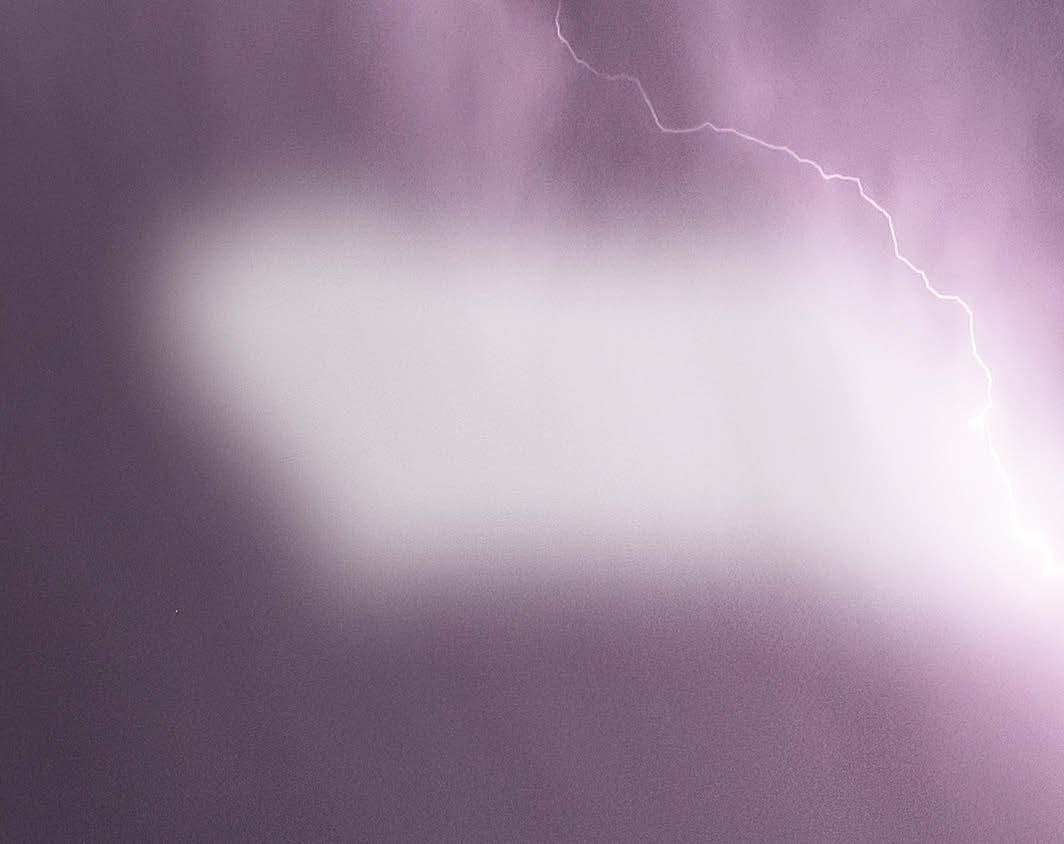

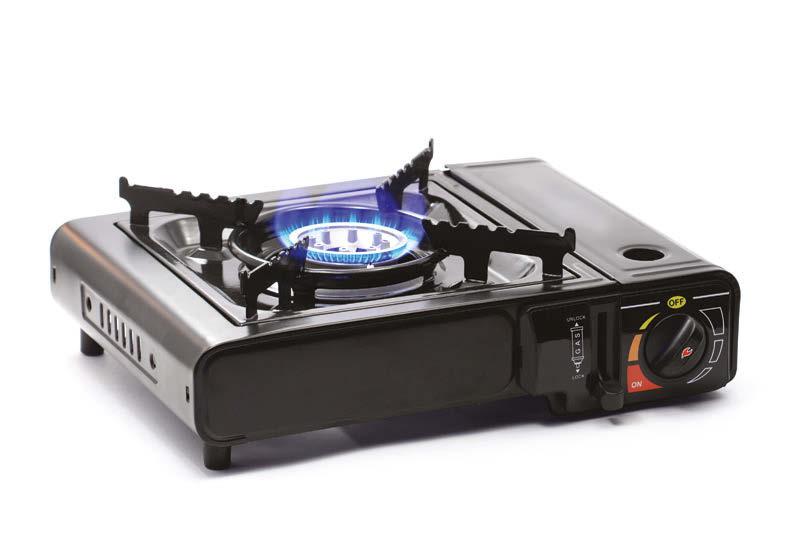






Disaster Resource Guide
Vital information for emergency readiness.
In the following pages, you’ll find facts, contacts and resources for various emergencies.
But first, here’s a handy checklist for putting together a basic emergency kit. Store a two-week supply of nonperishable food and water at home for shelter-inplace situations. Have a grab-and-go bag ready in case you have to evacuate; fill it with supplies that will last 72 hours, and keep a mini-kit with essential items in your car and at work.
WATER
1 gallon of water per person per day
NONPERISHABLE FOOD
Granola bars
Canned soups and vegetables
Nutritional powdered beverages
Dried fruits and jerkies
Crackers and peanut butter
Plates, utensils and napkins
Portable cooking appliances and can openers






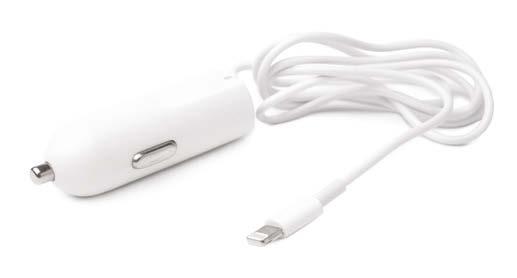
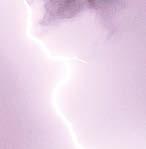













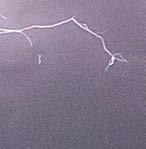




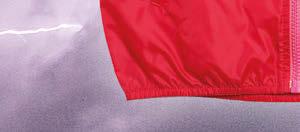











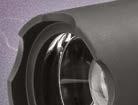







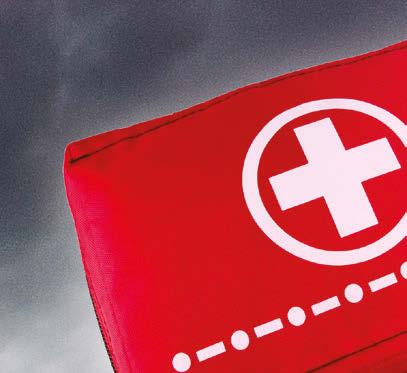





CLOTHING
Waterproof hooded jackets
Undergarments and warm socks
Comfortable shirts, pants and shorts
Sturdy, covered shoes
ESSENTIAL ITEMS
Flashlights, light sticks, flameless candles or lanterns
Batteries in commonly used sizes
Hand-crank or battery-operated radios







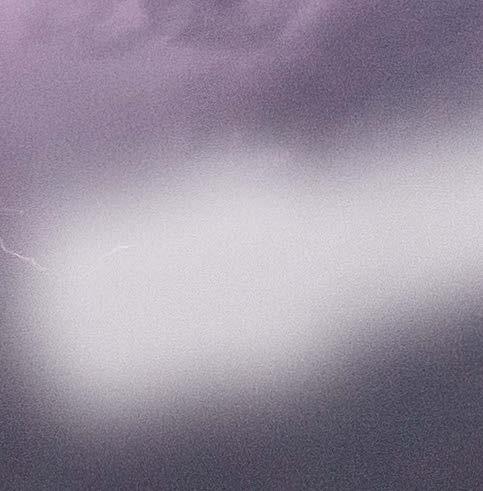






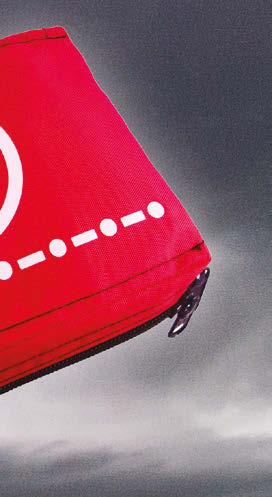







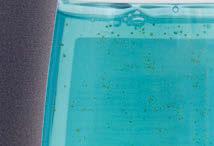

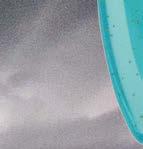






Multipurpose tools such as a Swiss Army Knife
Pre-charged power banks and solar chargers for mobile devices
Waterproof matches
Garbage bags
Sleeping bag or blanket
Portable tent and chairs with carrying cases
Cash, stored in waterproof bags
Reading and writing materials, quiet games, etc.
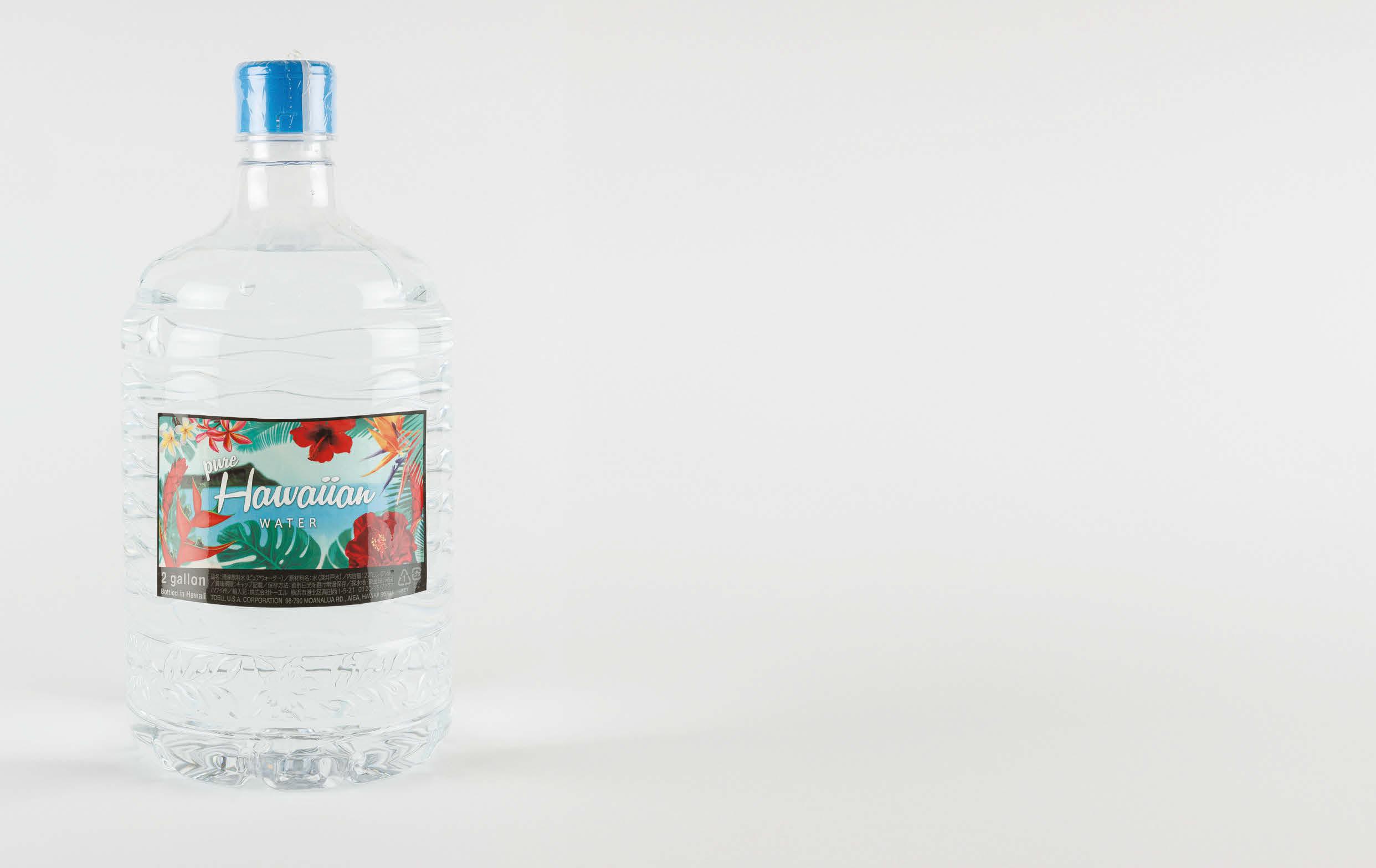
DISASTER RESOURCE GUIDE 20 • HAWAII DISASTER PREPARATION 2024 • hawaiihomemag.com
PHOTOS: GETTY IMAGES
PERSONAL HYGIENE
Toilet paper, wrapped in waterproof bags
Feminine hygiene products and waste bags
No-rinse disposable bathing wipes
Daily care items such as hand sanitizer, deodorant, toothpaste and brush, dry shampoo, hair combs and brushes, etc.
Laundry bags and soap
MEDICAL NEEDS
Updated first-aid kit
Prescription medicines
Specialty vitamins
Face masks
Glasses, contact lenses, hearing aids, etc.
KIDS’ CARE
Formula and food
Diapers and wipes
Clothing
Child-safe sanitation and hygiene items
Blanket and bedding
Activities, games, toys
PET CARE
Portable pet carrier, leash and harness
Identification tags
Dried or canned foods, with bowls
One-week supply of water
Waste bags and wet wipes
Toys and blanket
Pet first-aid kit and medicines
IMPORTANT DOCUMENTS
Copy of passport, driver’s license, school or work IDs, birth certificate, marriage certificate, proof of address, lease or deed to home, vehicle registration and insurance policies
Copy of family photo and pet photo, in case anyone gets separated
List of emergency contacts
Waterproof, sealable document holders

DISASTER RESOURCE GUIDE
order@toellusa.com
Disaster-Proof Your Home and Business
Here’s how to keep your loved ones safe — and your residential and commercial assets, too.
Homeowners and business owners know that natural disasters are inevitable. Protecting your family, company and property with a recovery and continuity plan is critical. Here are some key tips to remember.

FOR HOUSEHOLDS:
Create and practice an evacuation plan with your ohana
Designate an off-island person to be your household’s contact for communications in case family members on-island lose contact with each other.
Prearrange an alternative place to stay with family or friends in an emergency.
FOR HOMEOWNERS:
Shutters, panels, laminate or plywood window coverings can protect your home against wind and rain.
Consult a professional for impact-resistant glass windows.
Hurricane clips can prevent winds from blowing away your roof and walls.
Retrofit your home’s post and pier foundations.
Trim trees regularly.
Use a windowless bathroom or walk-in closet as a “safe room.”
Secure furniture and shelves.
Store a propane generator in the garage for backup power during outages.

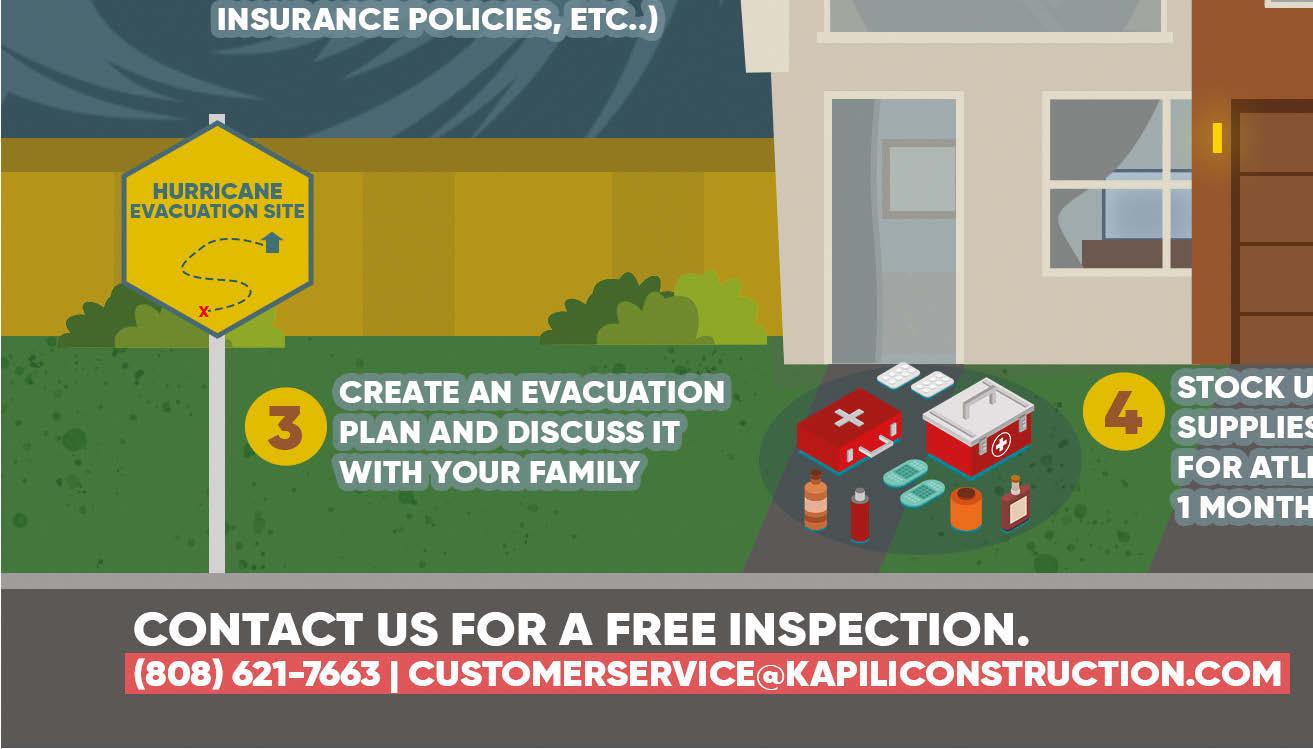
HOME AND BUSINESS 22 • HAWAII DISASTER PREPARATION 2024 • hawaiihomemag.com
PHOTOS: FEMA NEWS PHOTO; ILLUSTRATION: GETTY IMAGES
right: Several homes sustained roof damage due to high winds when Hurricane Iniki hit Kauai on September 11, 1992.
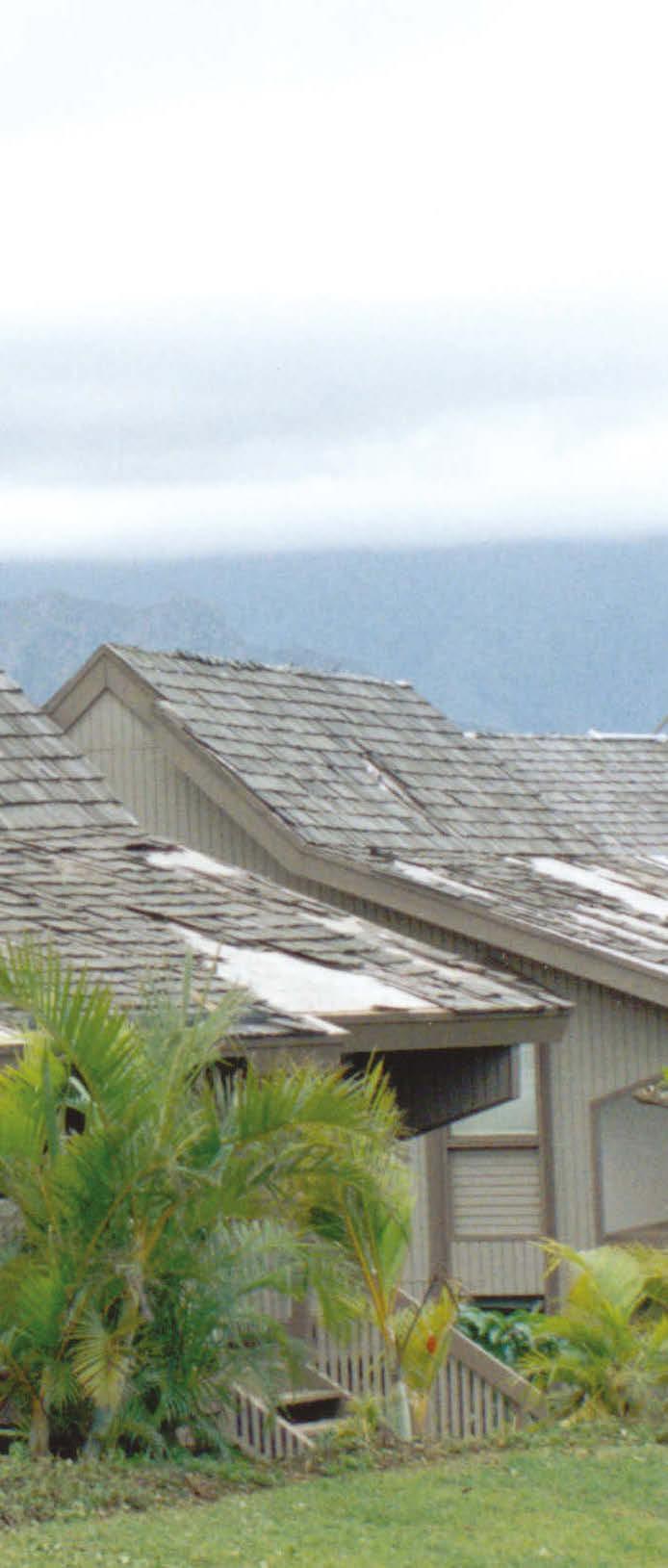
FOR BUSINESS OWNERS:
Store your data on a server at work or backed up on a cloud.
Know how to retrieve information in a post-disaster environment.
Plan for worst-case scenarios with your IT department or consultants.
Invest in backup generators.

Inventory your floor stock, office furniture and other assets.
Reassess your business insurance policies.
Create a communications strategy for website and social media updates, phone calls and text messages to inform vendors and clients of your company’s status during and after an emergency.
Establish a disaster-planning committee with employees and managers.
Additional Resources:
U.S. Department of Homeland Security: ready.gov/business
American Red Cross: readyrating.org
U.S. Small Business Administration: sba.gov
Internal Revenue Service: irs.gov
U.S. Department of Agriculture: fsa.usda.gov



HOME AND BUSINESS
Fire Preparedness and Prevention
Understand the risks of indoor and outdoor fires, and how to respond.
Fire safety has recently become a hot topic in light of events on Maui and abroad. Here are some notes for fire preparedness and prevention in your homes and community.
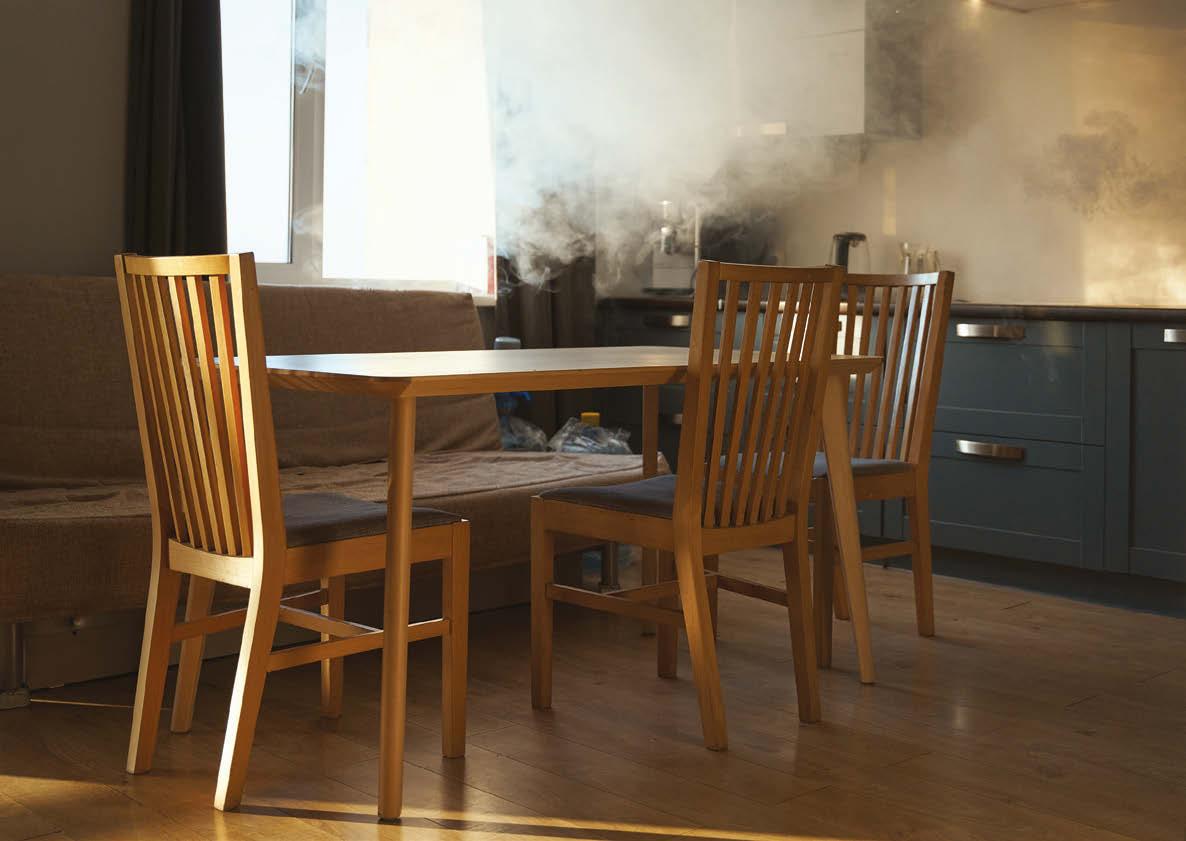
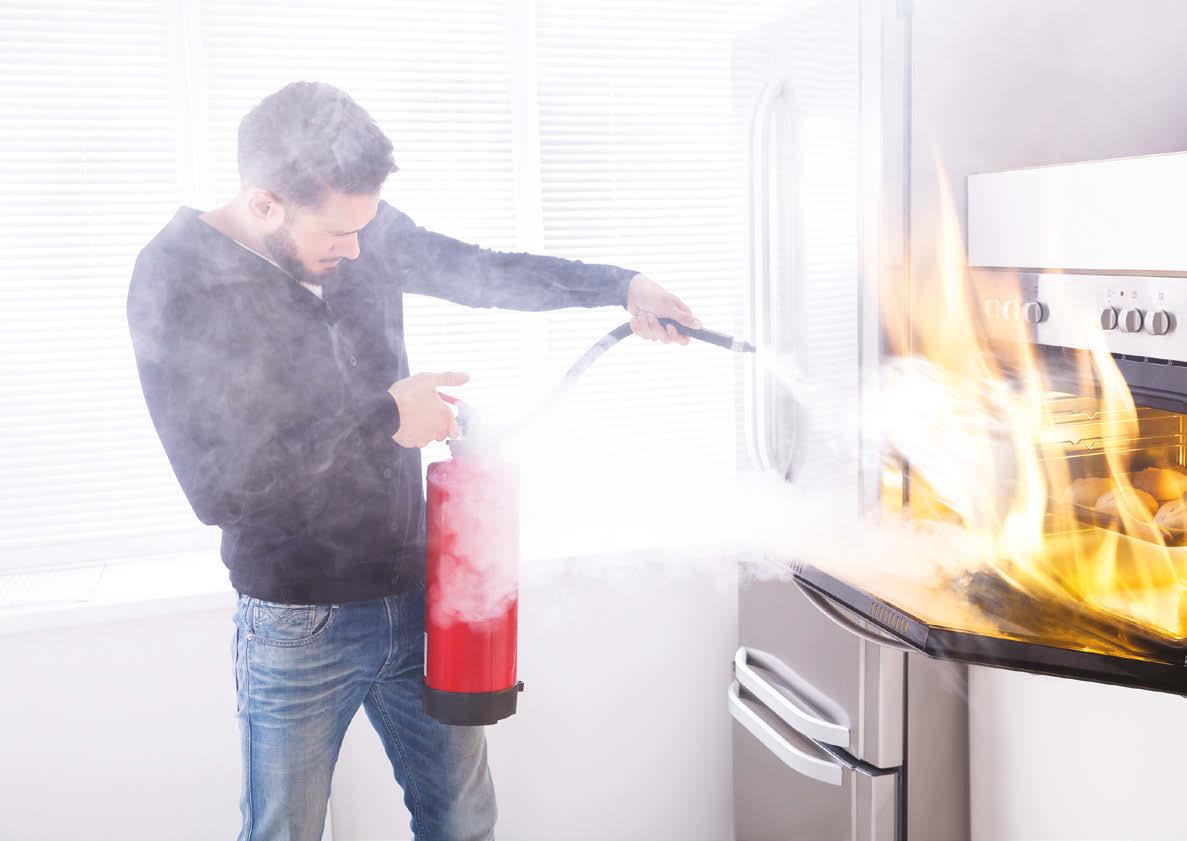

INDOOR FIRE TIPS:
Do not use water to extinguish electrical fires. Instead, use a fire blanket to smother an electrical fire, pour salt or baking soda onto it, or put it out with an extinguisher.
Do not pour water onto a grease fire. If a cooking pan or grill is in flames, turn off the heat source, then slide a metal lid or cookie sheet over the fire. Leave the lid on until cool. You can also use an extinguisher to stop a grease fire.
Replace or repressurize the fire extinguishers in your home when the gauge arrows no longer point to green. Dispose old extinguishers at a recycling center.
Opt for battery-operated flameless decorative candles over real wax candles. If you choose to use real candles, keep them at least 1 foot away from other objects. And never use them in a home with oxygen tanks.
Never leave candles unattended.
Keep matches and lighters away from children.
During the holidays, turn off all holiday lights before sleeping or leaving home.
FIRES 24 • HAWAII DISASTER PREPARATION 2024 • hawaiihomemag.com
PHOTOS: GETTY IMAGES

Monitor alerts for fire hazards and air quality concerns in your area. Download mobile apps from FEMA and the National Weather Service to get the latest news.
Create a “defensible space” around your home that’s free of leaves, flammable items and other debris.
Work with professional contractors who understand how to integrate fire-resistant landscaping and construction materials in renovations and repairs.
Be ready to evacuate immediately if a wildfire strikes your area. Practice and plan routes of escape with your household members.
Keep N95 masks on hand to protect against smoke inhalation. Designate a room in your home where all doors and windows can be closed, and an air purifier can be
installed; when smoke from an outdoor fire gets to be too much, this room can be a safe space, especially for those with respiratory sensitivities.
Be cautious when walking around areas with hot ash, smoldering embers or heat pockets on the ground after an outdoor fire.
Document fire damage with photos and contact your insurance company immediately.
Additional Resources:
U.S. Department of Homeland Security: ready.gov/wildfires
National Weather Service: weather.gov/safety/ wildfire-ready
FEMA App: fema.gov/about/news-multimedia/ mobile-products#download





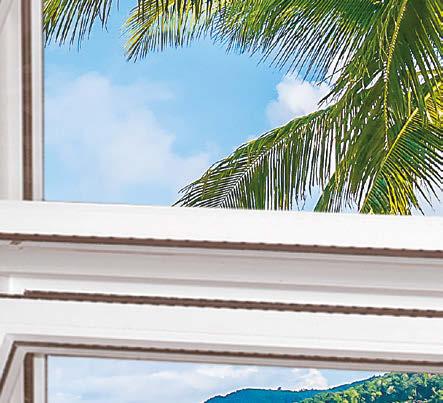

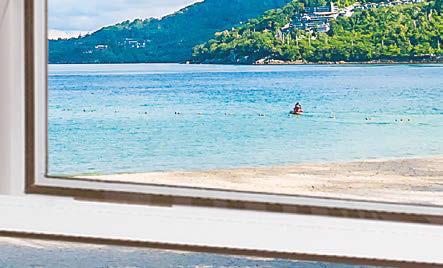


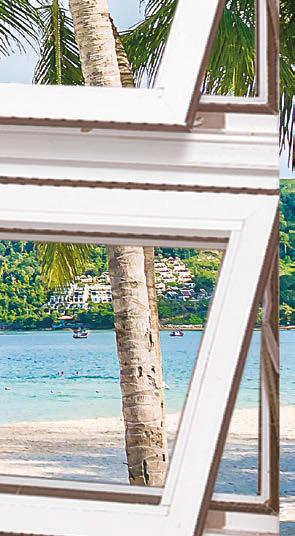

FIRES
Visit our factory showroom in Waipio Business Park. Licensed Installation BC-18663 808.676.0529 • coastalwindows.com Locally Crafted For Your Island Home READERS’ CHOICE AWARDS 2023 • Impact-rated storm protection • 99.9% UV Protection • Solar heat control. Significant noise reduction • Increased security • COASTALGARD is available with 500 Series awning, sliding & picture window styles and sliding lanai doors. Precision-engineered specifically for Hawaii to protect against the high winds and flying debris of a hurricane, COASTALGARD windows and doors provide year-round protection for your home. Manufactured Locally with Impact Protection WINDOWS & DOORS 2018-2023 WINNER BY GARD
OUTDOOR FIRE TIPS:
Notes for Hurricane Season
It’s never too early to get ready for the next big storm.
The central pacific hurricane season occurs between June 1 and Nov. 30 annually, with peak tropical cyclone activity around August and September. Stay vigilant before, during and after these storms.
BEFORE A HURRICANE
According to the Central Pacific Hurricane Center, a “hurricane watch” signals that a storm could make landfall within 48 hours. A “hurricane warning” means hurricane conditions such as high winds, heavy rains and storm surge are expected within 36 hours. Prepare your home and household as far in advance of these alerts as possible.
Fill vehicle gas tanks and park vehicles away from trees.

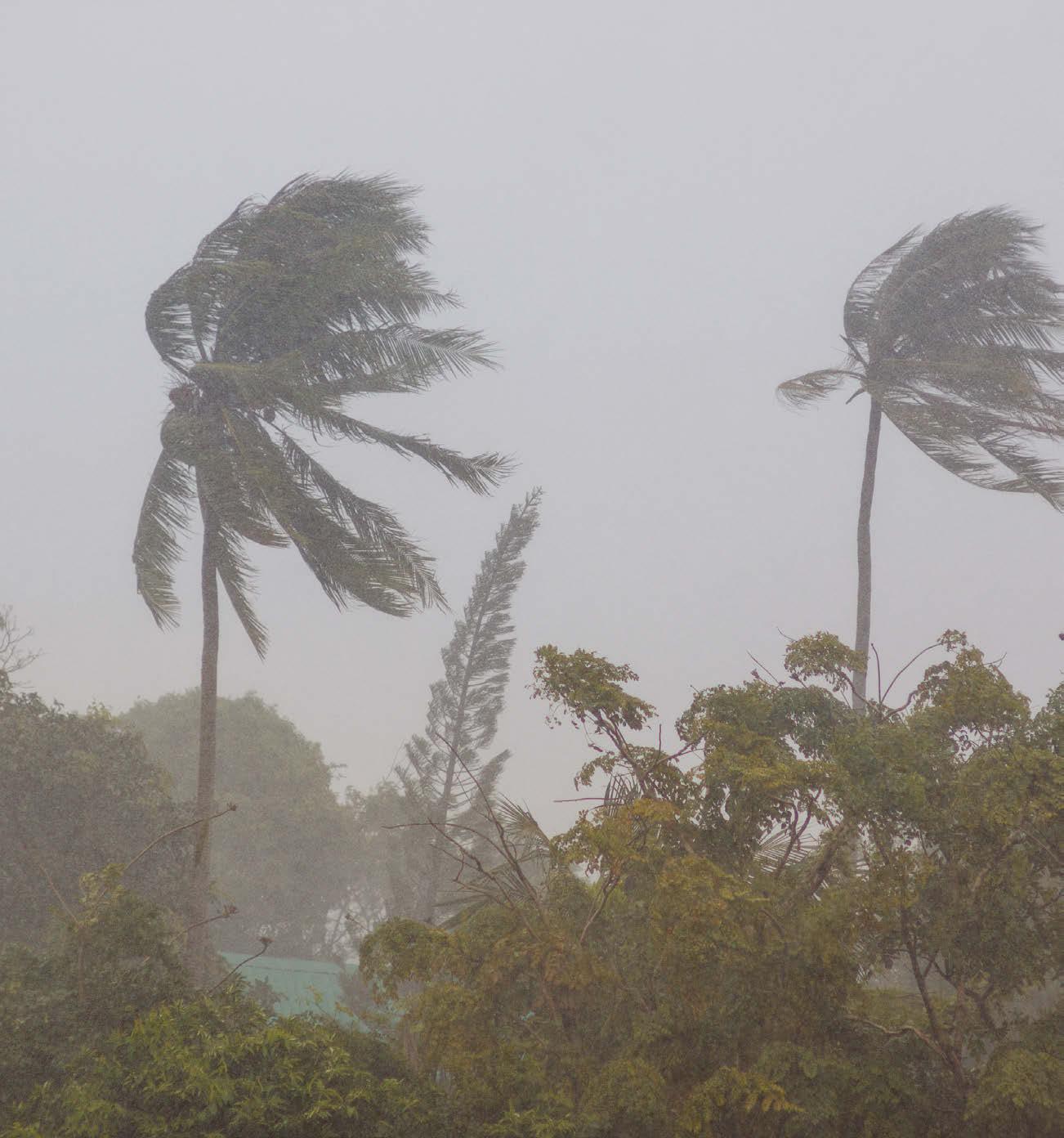

Secure outdoor items, awnings and large objects that could fly in high winds.
Trim trees and plants around your home, and clear out your rain gutters and downspouts.
Protect windows with plywood or other materials.
Set freezers and refrigerators to the coldest settings in case of a power outage.
Move hazardous materials, including propane tanks, away from heat.
HURRICANES 26 • HAWAII DISASTER PREPARATION 2024 • hawaiihomemag.com
PHOTOS AND ILLUSTRATION: GETTY IMAGES
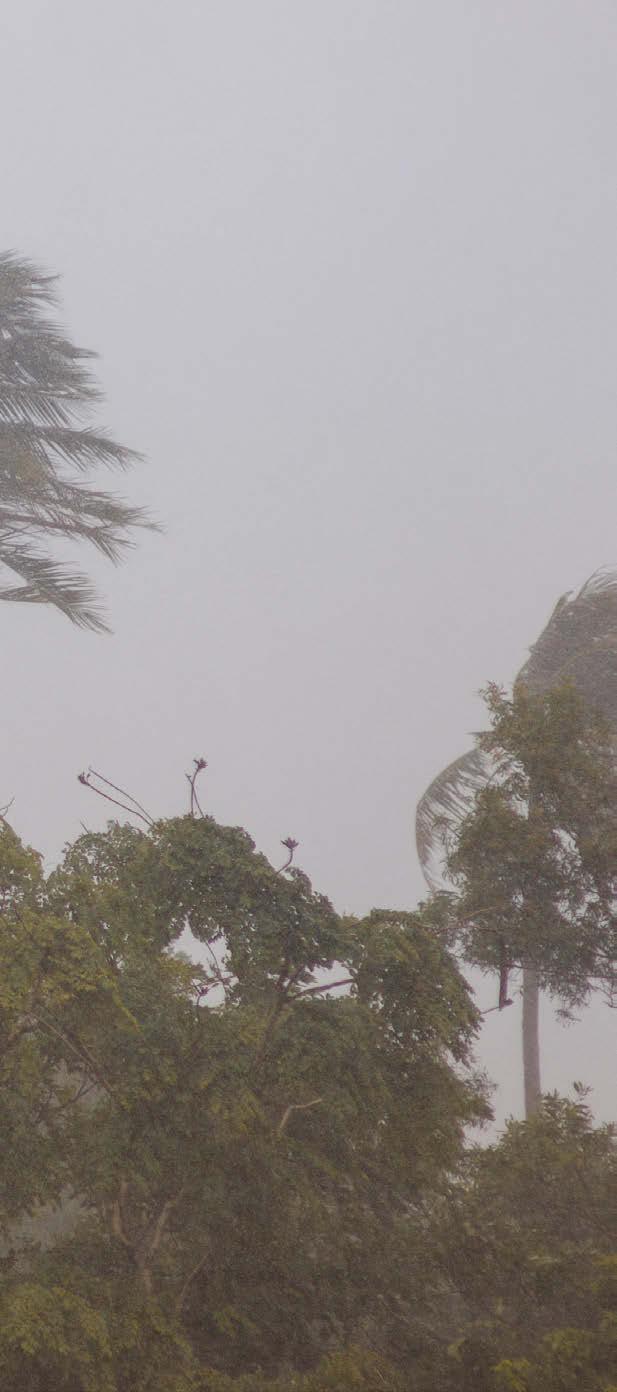
DURING AND AFTER THE STORM
Shelter in place if your home has been retrofitted or built to withstand hurricane conditions. Find a small interior room, closet or hallway on the lowest level of your home for safety. Keep doors and windows closed.
Evacuate if your home has not been retrofitted or built for hurricane conditions, and if you live in an area prone to flooding from storm surge.
Stay tuned to media coverage, mobile alerts and siren warnings.
Communicate via text messages to keep phone lines open for emergency responders.
Stay sheltered indoors even when the eye of the hurricane brings a brief period of calm.
After a hurricane passes, check your surroundings and be cautious around broken glass and other debris, damaged structures and downed power lines.
Additional Resources:
Central Pacific Hurricane Center 7-Day Graphical Tropical Weather Outlook: nhc.noaa.gov/gtwo.php?basin=cpac
Hawaii Emergency Management Agency: dod. hawaii.gov/hiema/get-ready/prepare-your-home/
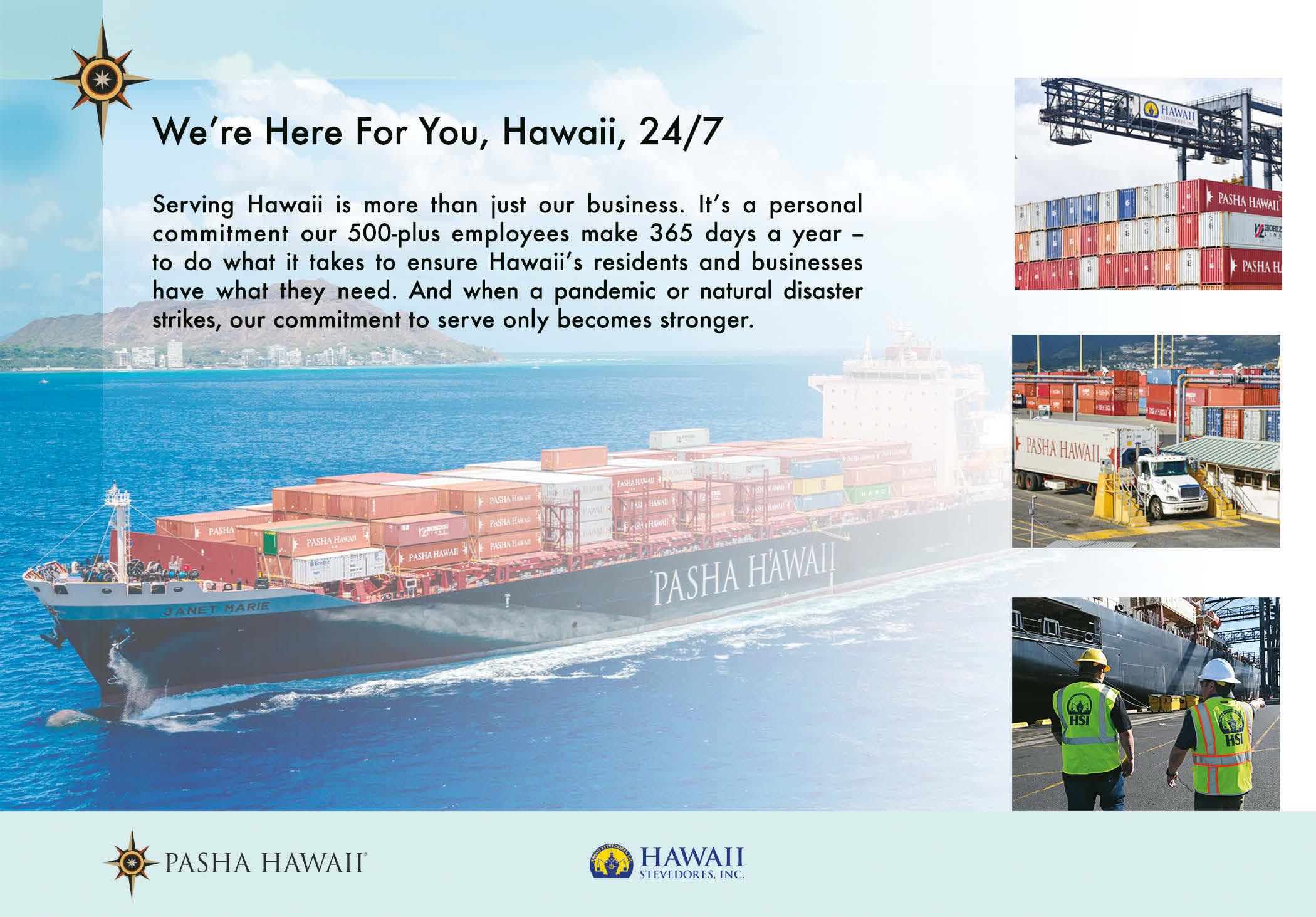
HURRICANES hawaiihomemag.com • HAWAII DISASTER PREPARATION 2024 • 27
resize.indd 1 3/25/24 2:56 PM
Floods Explained
Rising waters can cause significant property damage and injuries.
ccording to the city and county of honolulu department of emergency management, about 11 flash floods occur each year in Hawaii. Flooding and flash flooding are possible at any time, but most incidents take place during the Islands’ wet season, October-April. Take caution with these tips.
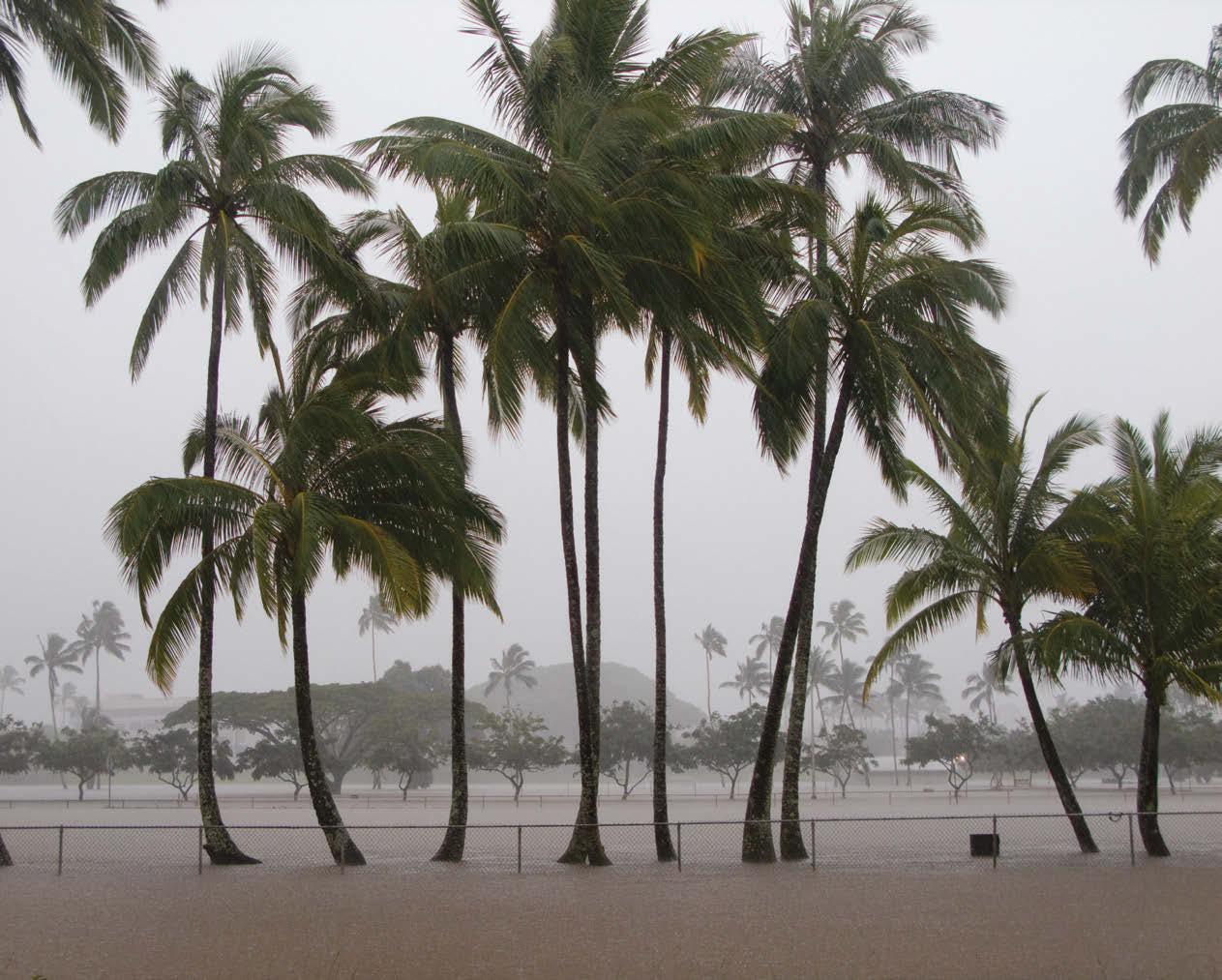
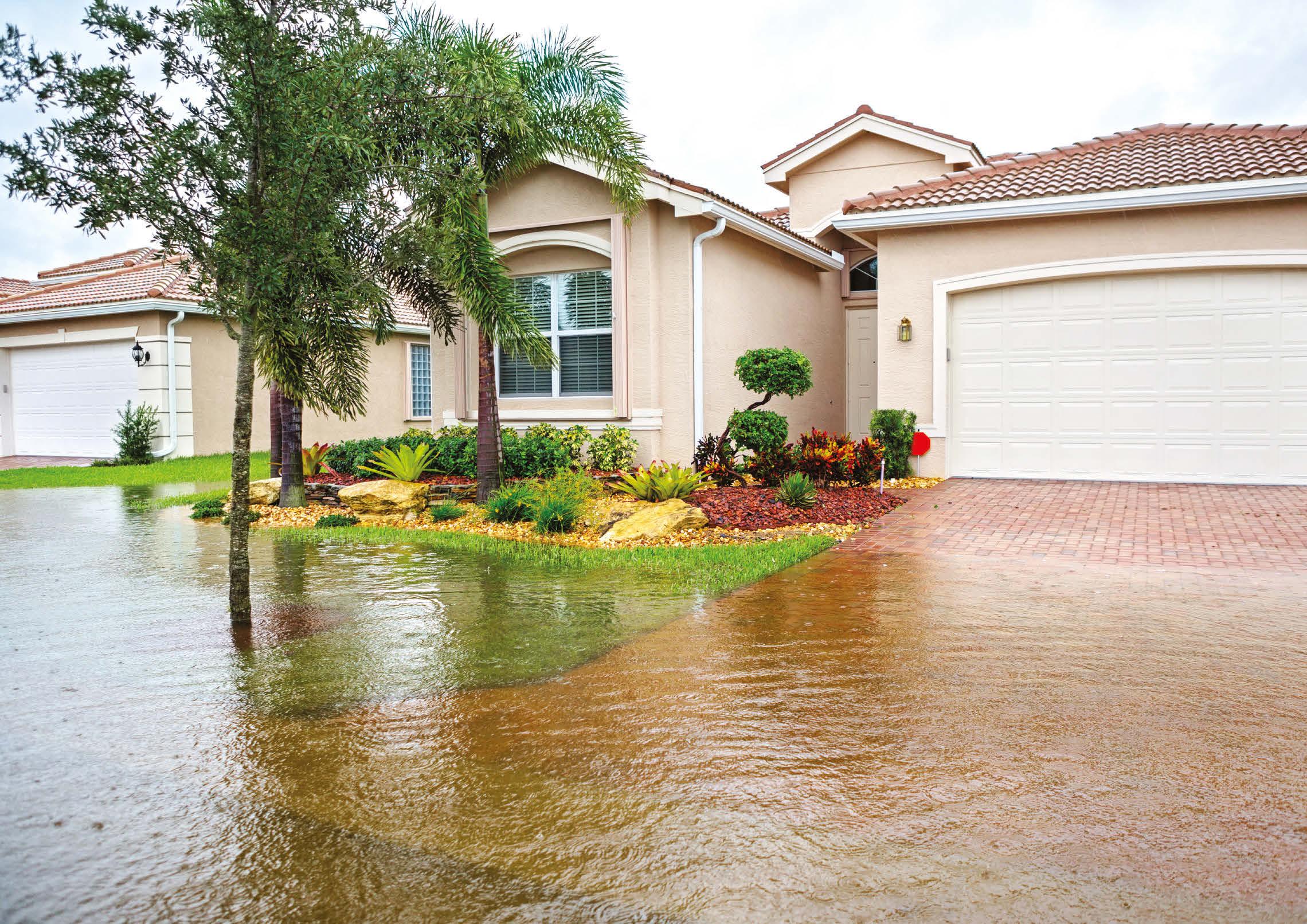










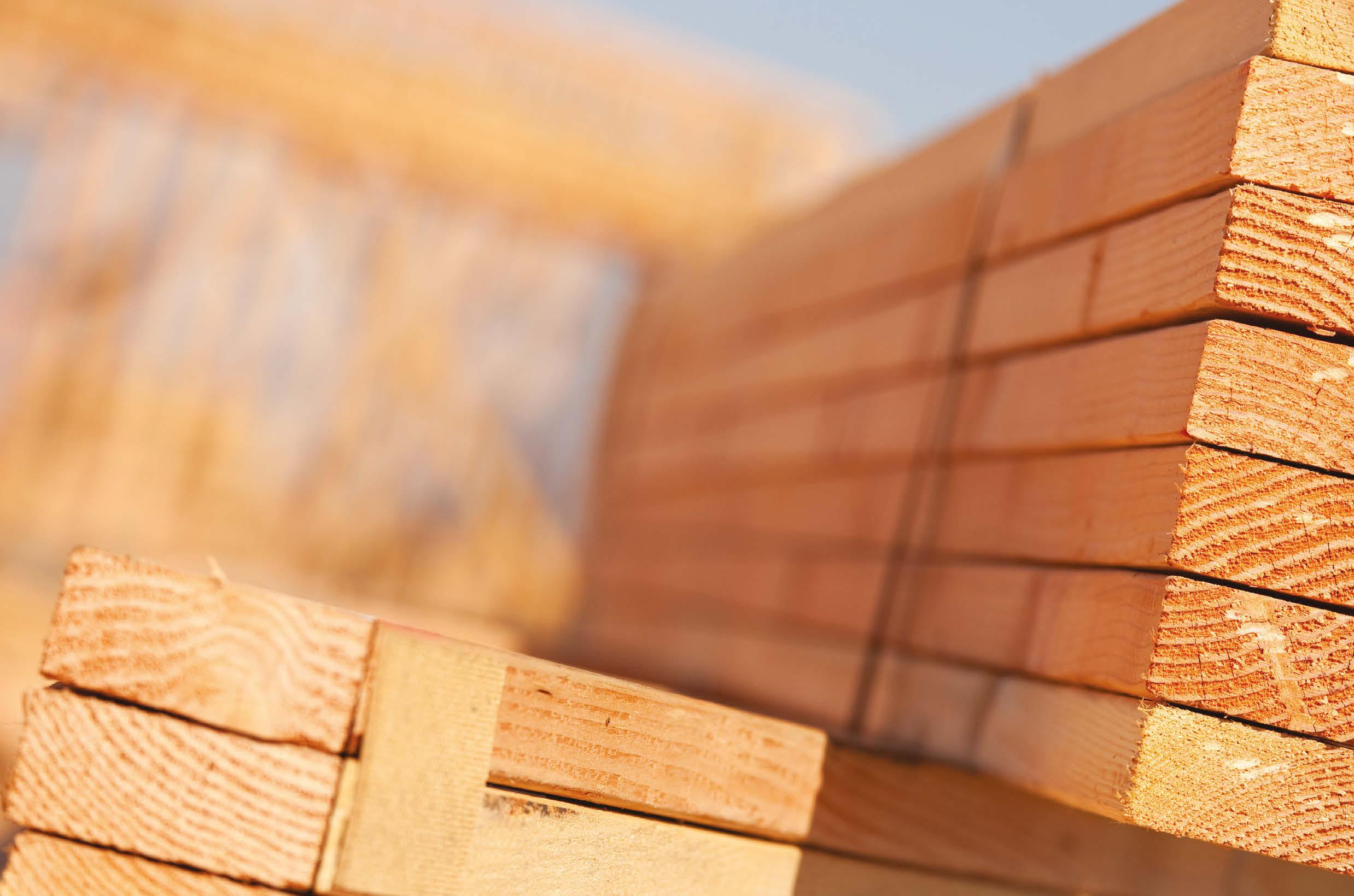
FLOODS 28 • HAWAII DISASTER PREPARATION 2024 • hawaiihomemag.com
PHOTOS AND ILLUSTRATION: GETTY IMAGES
Invest in flood insurance for your home and business.
Be aware of flood risks around your home, school and workplace, such as nearby drainage channels, streams and low-lying areas.
Have an emergency plan that includes roles and directions for members of your household, and study maps to determine safe routes for evacuations.
When a “flood advisory” is announced by the National Weather Service, flooding is not expected to cause major impacts, but may lead to inconveniences for communities and households. Exercise patience and caution.
A “flood watch” means severe flooding is possible; a “flood warning” means flooding is imminent or in progress. Stay tuned to weather and emergency alerts, as flooding can escalate quickly.
Immediately evacuate to higher ground (including moving to a building’s upper levels if you live in a high-rise), or shelter in place if instructed to do so.
Remember the motto, “Turn Around, Don’t Drown!” and do not attempt to drive, swim or walk through a flooded area.
If you’re in a vehicle, stay inside and shut all windows and doors. If the water rises, climb onto the vehicle’s roof.


After a flood event, return home only after your area is deemed safe by local authorities.
Inventory the damage to your home and property. Do not begin cleanup until you have taken photos for your insurance reports.
During cleanup and recovery, stay protected with waterproof clothing, gloves, masks and face shields. Shut off the electricity if it’s safe to do so and avoid electrical items that are wet.
Be cautious of contaminated water and hidden structural damage on roadways.
Additional Resources:
Sign up for mobile flood warning alerts: hnl.info/starter
Federal Emergency Management Agency
Flood Map Service Center: dod.hawaii.gov/ hiema/get-ready/prepare-your-home/






























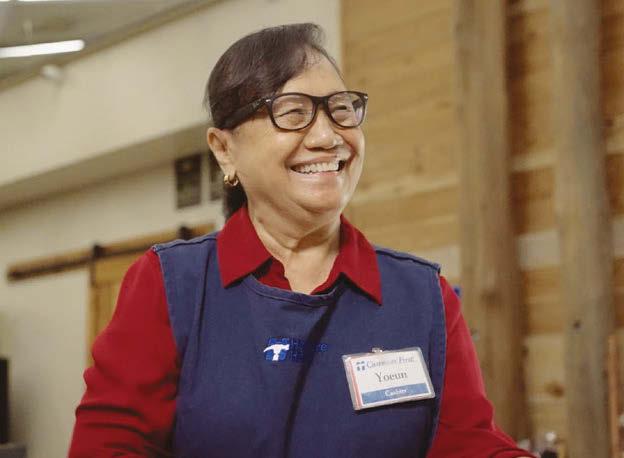
Since we’ve opened our first store in Kailua, the compass guiding our journey has been unchanging – to offer our customers the finest service. We believe in building relationships with our customer, so you can count on us to help you with your needs. Mahalo to our employees and our customers, who have helped us to serve as Hawaii’s home improvement center for almost 70 years.
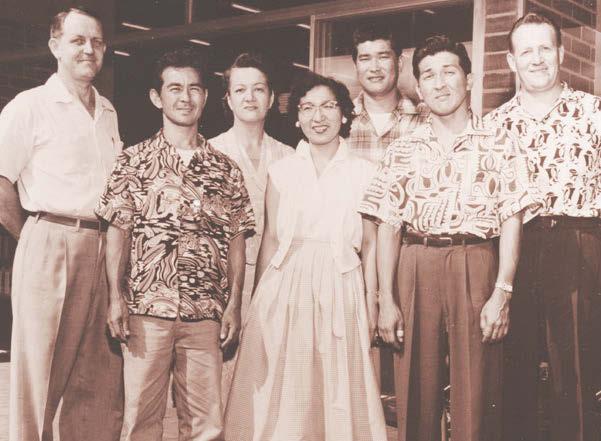




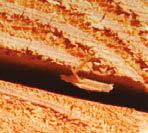







FLOODS
Since 1954.
FLOOD PREPAREDNESS: Customer First
Tsunami Awareness
Be ready to head for higher ground ahead of these seismic sea waves.
Hawaii’s location in the middle of the pacific ocean makes it susceptible to tsunamis generated by seismic activity as far away as Japan, Alaska and Chile. Here’s what you need to know about tsunamis, and how you can be prepared.
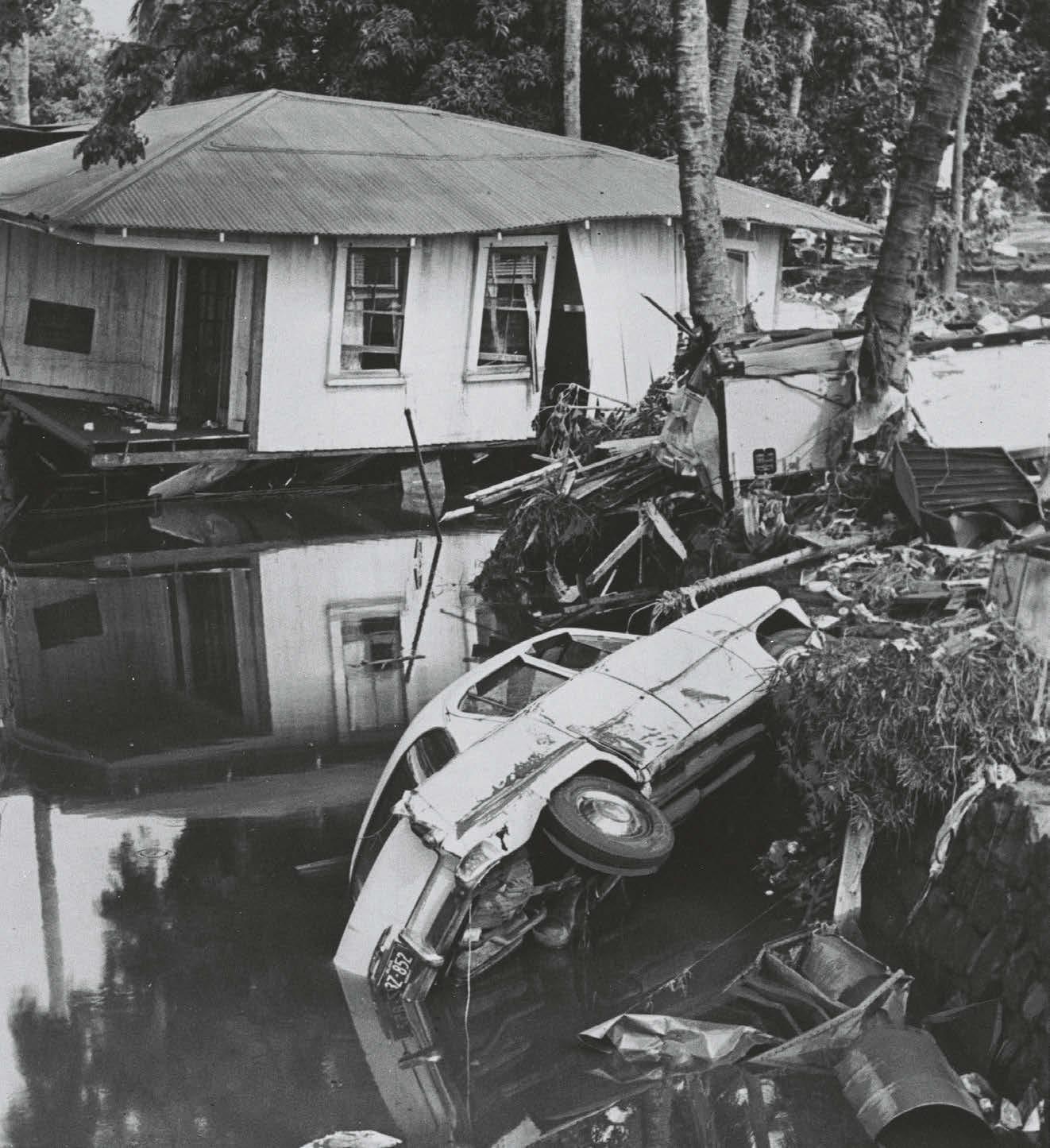
above: On May 22, 1960, a magnitude 9.5 earthquake in Chile generated a tsunami that reached Hawaii Island. Shown here is a car that was hurled into the stream bed on Piopio
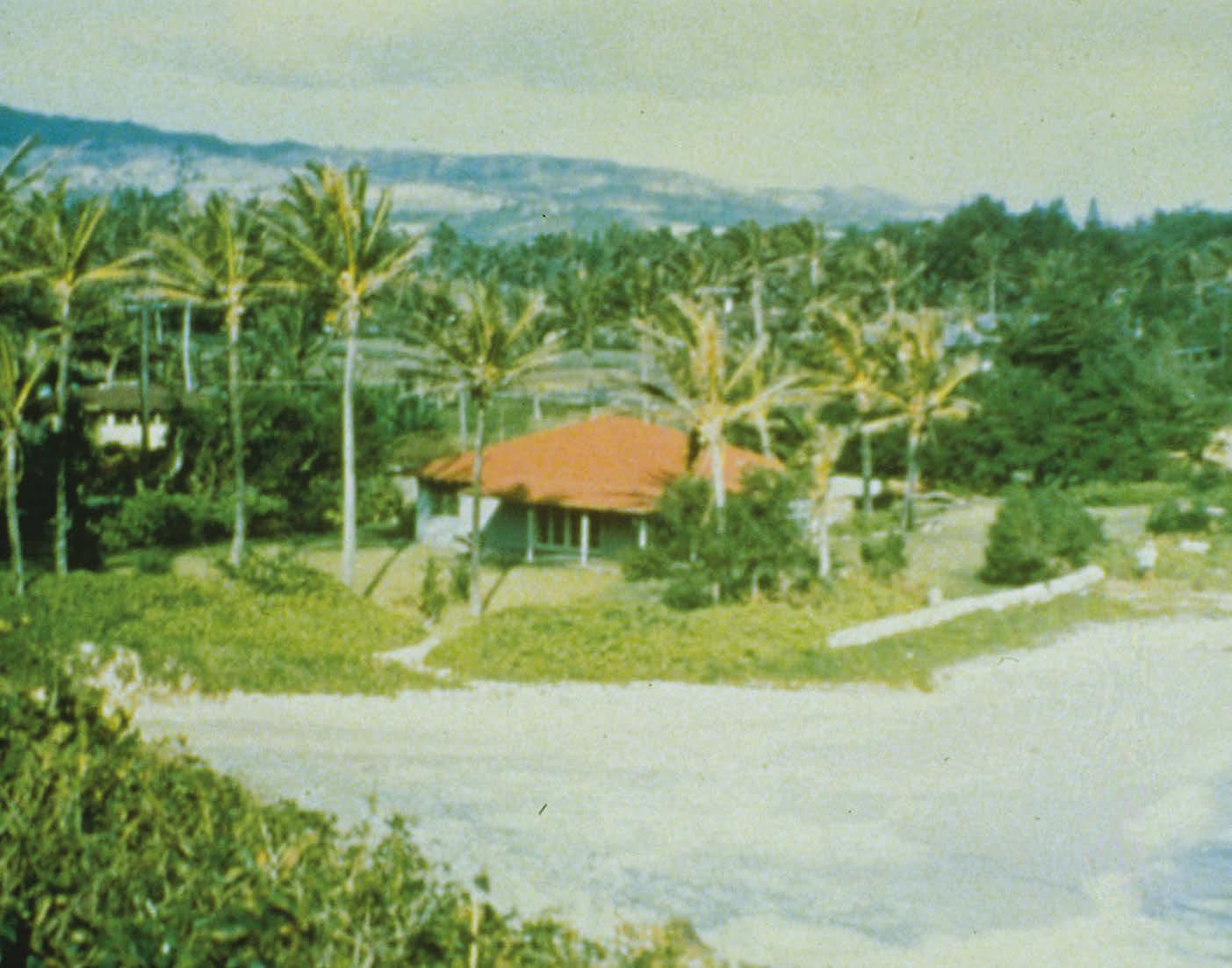


TSUNAMIS 30 • HAWAII DISASTER PREPARATION 2024 • hawaiihomemag.com
Street amid the tsunami’s destruction in Hilo.



left: These three sequential photos show the arrival of a major wave on March 9, 1957, at Laie Point on Oahu. A magnitude 8.6 earthquake south of the Andreanof Islands in the Aleutian Islands generated the tsunami, which also impacted Kauai.
TSUNAMIS EXPLAINED:
• By definition, a tsunami is a series of long ocean waves triggered by an underwater landslide, earthquake or volcanic eruption.
• Tsunamis can be deadly, with waves traveling up to 500 mph from their point of origin before making landfall.
• Tsunamis slow down when they reach the coast; waves at the shore can be up to 100 feet high and waters can travel up to 10 miles inland.
• Get to know which local neighborhoods are in tsunami evacuation zones. Plan an evacuation route from your home and arrange to stay with friends or loved ones in safer areas, long before any tsunami threat.
• A “tsunami watch” issued by the Pacific Tsunami Warning Center indicates that a seismic event has occurred and potential tsunami threats to Hawaii are being assessed. Stay tuned to local media for additional alerts.
• A “tsunami advisory” indicates a higher probability that a tsunami could affect Hawaii. As emergency officials monitor the situation, it’s a good time to begin your evacuation preparations, get your emergency kits ready, and stay off beaches and out of waterways.
• A “tsunami warning” means that a tsunami is imminent. Evacuate low-lying areas immediately, seek higher ground or head to a higher floor if you are in a condo or high-rise building.
• Tsunami activity can progress quickly, so it’s important to stay informed. A tsunami generated by seismic activity on Hawaii Island, for example, can reach Maui, Oahu and Kauai in minutes. Tsunamis from Alaska, Japan and South America may take a few hours. Prepare accordingly.
Additional Resources:
Extreme Tsunami Evacuation Zone map: static.pdc.org/tsunami/index.html
U.S. Tsunami Warning System: tsunami.gov



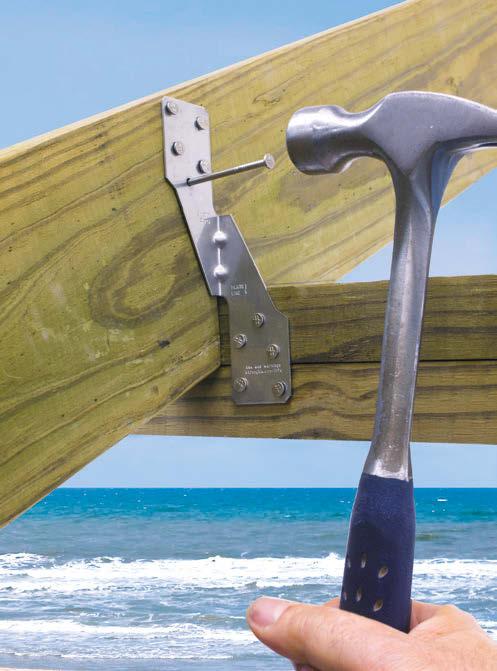
hawaiihomemag.com • HAWAII DISASTER PREPARATION 2024 • 31
PHOTOS: COURTESY OF INTERNATIONAL TSUNAMI INFORMATION CENTER; HENRY HELBUSH
We o er site prep, irrigation services, delivery and installation. We also ship to the outer islands. Let us help you choose the right grass for your home. Contact Us Now at (808) 371-0527 for a Greener Tomorrow! Grass on the Cutting Edge LIC#C-32884 24/7 ONLINE ORDERING AVAILABLE www.HawaiianTurfgrass.com Dark Lush Green | Fine Texture | Highly Salt Tolerant | Very High Wear Tolerance Stadium Zoysia Available from Hawaiian Turfgrass PLAN AHEAD OF THE STORM: CHOOSE TURFGRASS Hawaii’s Leader in Turfgrass & Sod Rinell Wood Systems, Inc. 2706 Kilihau St., Unit 100, Honolulu, HI 96819 www.rwshawaii.com | 808-834-1344 SUPPLYING QUALITY BUILDING MATERIALS TO HAWAII CONTRACTORS SINCE 1979 • Hawaii’s largest stocking Strong-Tie dealer • Unrivaled expertise and product knowledge • Extensive inventory & custom solutions • Statewide sales with prompt service and delivery LOCALLY OWNED & OPERATED FOR THREE GENERATIONS Where Innovation Meets Durability ESTABLISHED IN 1979 TH
Understanding Earthquakes
The seismic events are tough to predict and potentially disastrous.
eismic activity is constantly happening in hawaii — reports from the Hawaiian Volcano Observatory and U.S. Geological Survey estimate that 5,000-10,000 earthquakes occur annually in the Islands. Although most of them are too small to be felt, it’s important to know what to do when a major earthquake strikes.


EARTHQUAKES 32 • HAWAII DISASTER PREPARATION 2024 • hawaiihomemag.com

below: A magnitude 6.7 earthquake struck Kiholo Bay on Hawaii Island on October 15, 2006. The temblor was strong enough to be felt as far away as Oahu, and caused major damage to Hawaii Island infrastructure. Shown here are views of Highway 19 (southeast of Kawaili Bridge between Kukaiau and Paauilo) and Honokaa High School following the quake.
NOTES ON EARTHQUAKES:
• Despite advanced technologies and improved seismic monitoring, scientists are still unable to reliably predict when major earthquakes will occur.
• Scientists measure earthquakes by “intensity” (the amount of shaking and damage caused) and “magnitude” (the size of an earthquake and the ground motion detected by a seismometer).
• The Richter scale and moment magnitude scale are among various methods used to calculate an earthquake’s size. Earthquakes of magnitude 4 or higher can cause damage to communities.
• If you feel an earthquake while you are at school, home or an indoor workplace, drop to the floor and seek shelter under a sturdy desk or table. Avoid windows,

tall shelves and items that could fall. Hold on until the shaking stops.
• If you’re outdoors during an earthquake, stay away from construction equipment, wooden poles and other heavy objects.
• If you’re in a vehicle, come to a stop and remain inside the vehicle until the earthquake subsides.
• Stay tuned for tsunami threat alerts, and be ready to head for higher ground or to an area farther inland that’s at least 100 feet above sea level.
Additional Resources:
“Did You Feel It?” Earthquake Reporting
Website: earthquake.usgs.gov/data/dyfi
“The Great Hawaii ShakeOut” Earthquake Preparedness Event: shakeout.org/hawaii


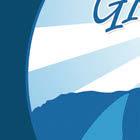




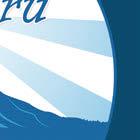
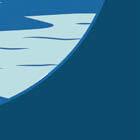

EARTHQUAKES hawaiihomemag.com • HAWAII DISASTER PREPARATION 2024 • 33 PHOTOS: U.S. GEOLOGICAL SURVEY PHOTO BY P. DOTRAY; C. FRANCOS
left: A field crew from Hawaiian Volcano Observatory hikes along a portion of Crater Rim Drive en route to setting up temporary seismic instruments around Halemaumau Crater to measure earthquake and volcanic activity.
Shower Enclosures Mirrors & Railings Glass Replacement Glass Table Tops Safety Glass Breezway Windows & Much More! Lic#: C31626 THE GLASS GURU COMMERCIAL & RESIDENTIAL GLASS EXPERTS 808-234-4260 TheGlassGuru.com/honolulu @glassguruhonolulu
Stay in Touch and Involved
Communications and community resources to remember.
RADIO STATIONS
KHKA CBS Sports Hawaii (part of FEMA’s national public warning system): CBS 1500AM
KSSK Radio: KSSK 590AM
Hawaii Public Radio: KHPR 88.1FM, KIPO 89.3FM
Krater 96: KRTR 96.3FM
KZOO Hawaii (Japanese): KZOO 1210AM
KREA (Korean): KREA 1540AM
KNDI (Filipino and Chinese dialects, Laotian, Okinawan, Vietnamese, Samoan, Tongan, Marshallese, Chuukese and Pohnpeian): KNDI 1270AM
NOAA Weather Radio: On Oahu, the National Weather Service provides information 24 hours a day on radio frequencies 162.450 (Channel 3, WWF39,
Hawaii Kai) and 162.550 (Channel 7, KBA99, Mount Kaala)
MOBILE AND DIGITAL RESOURCES
Red Cross Mobile App: redcross.org/gethelp/how-to-prepare-for-emergencies/ mobile-apps.html
FEMA Mobile App: fema.gov/about/newsmultimedia/mobile-products
City & County of Honolulu HNL Info Mobile App: honolulu.gov/dem/ preparedness/stay-informed.html
Board of Water Supply: boardofwatersupply.com/prep
Hawaii Emergency Management Agency: ready.hawaii.gov
Hawaiian Humane Society: hawaiianhumane.org/disaster-ready
Hawaiian Electric Oahu Power Outage Map: hawaiianelectric.com/safety-andoutages/power-outages/oahu-outage-map
FOR FAMILIES AND COMMUNITIES
Community Emergency Response Team Training: honolulu.gov/dem/involved/gettrained.html
CPR and AED Training: aedinstitute.com
First Aid Training: redcross.org/take-a-class
Child-Friendly Emergency Planning Tools: ready.gov/kids
American Veterinary Medical Association: avma.org/resources-tools/ pet-owners/emergency-care/pets-anddisasters





























ADDITIONAL RESOURCES
Get the latest ideas for home projects, industry news and special partner o ers delivered directly to your inbox.







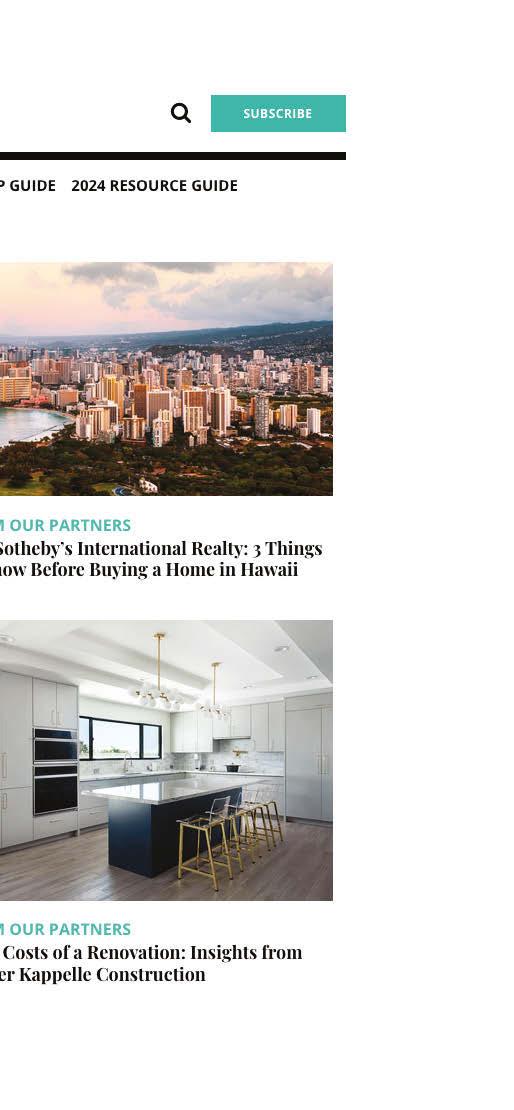





Scan the QR code or click on the “Newsletter” link on our homepage to sign up.
Welcome to our Hawaii Home + Remodeling community!
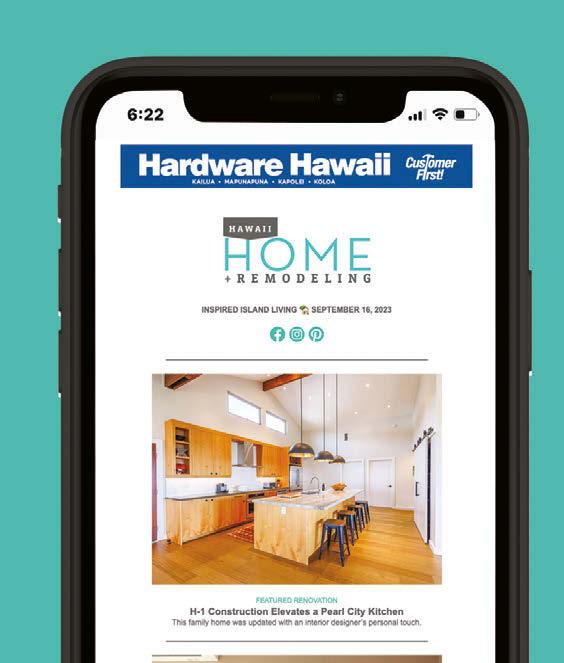


our free
Remodeling
visit our
hawaiihomemag.com | /hawaiihomemag @hawaiihomemag / hawaiihomemag
Subscribe to
Hawaii Home +
e-Newsletter!
website:
Hawaiian Electric works in close partnership with county Civil Defense agencies, Emergency Management departments and the Hawai‘i Emergency Management Agency during emergencies.
Electrical Safety
Planning and Preparation


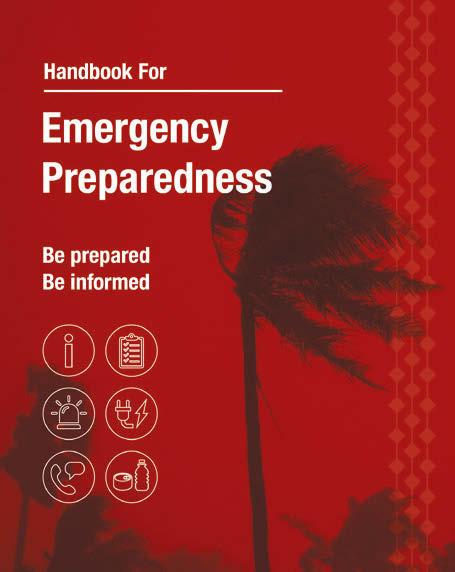

In an emergency, these tips can help you avoid danger: Never touch downed power lines, stay at least 30 feet away | If evacuating your home, turn off your electricity at the main circuit breaker or switch.
Home survival kits are essential during disasters and should include: 14-day supply of food and water for each person and pets/ service animals | Nonpershable foods | Portable radio | Cell phone with backup charger | See more in our Emergency Checklist.
Evacuation and First Aid
Put together an Evacuation Kit that includes: Sleeping bags or two bankets per person | Clothing for each family member | Important papers and documents | Where to meet if separated
Make sure your First Aid Kit includes: Current medications with prescription information | Bandages and band-aids | Hand sanitizer | Soap | Adhesive tape | Scissors and more
Communication Plan
A communication plan for your family should include information on the multiple ways you can contact one another. Your plan should include: Personal Information | Emergency Family Contact | Out-of-State Contact
Preparation will help you and your family stay safe. Use these resources to be informed and report trouble.
> Download the Emergency Preparedness Handbook at hawaiianelectric.com/safety (Different languages are available.)
> To report downed power lines/items touching power lines, call our 24/7 Trouble Line: O‘ahu: 1-855-304-1212 | Hawai‘i: 808-969-6666 | Maui: 808-871-7777
Moloka‘i and La - na‘i: 1-877-871-8461 toll free
us
Stay connected with
Be prepared. Be informed. Be safe.




































































































 Aloha nui, CYD ROSA Hawaii Home + Remodeling Publisher
Aloha nui, CYD ROSA Hawaii Home + Remodeling Publisher



















































































































































































































































